While the Polar RCX5 was officially released yesterday, I’ve actually been playing with it now for over a month – getting the change to put it through its paces in hundreds upon hundreds of miles of real world running, cycling and swimming. How would it stand up to the pounding, and how does it compare to the competition?
Like all my reviews, they tend to be pretty in depth (perhaps overly so) – but that’s just my trademark DC Rainmaker way of doing things. Think of them more like reference guides than quick and easy summaries. I try and cover every conceivable thing you might do with the device and then poke at it a bit more. My goal is to leave no stone unturned – both the good and the bad.
Because I want to be transparent about my reviews, this unit was provided by Polar as a media trial. It’s technically a prototype unit – though should be the same as the final production units. Once I’m done with it, it heads back to Polar. Simple as that. Sorta like hiking in wilderness trails – leave only footprints. If you find my review useful, you can use any of the Amazon links from this page to help support future reviews.
Lastly, at the end of the day keep in mind I’m just like any other regular triathlete out there. I write these reviews because I’m inherently a curious person with a technology background (my day job), and thus I try and be as complete as I can. But, if I’ve missed something or if you spot something that doesn’t quite jive – just let me know and I’ll be happy to get it all sorted out. Also, because the technology world constantly changes, I try and go back and update these reviews as new features and functionality are added – or if bugs are fixed.
With that, let’s get onto the review!
Unboxing:
In my case I had a prototype unit, so keep that in mind. Thus it’s plausible that the final products that end up at your local retail stores may have more fanfare associated with them…or just simply more paper stuffed in there. But, it’ll at least have these important parts, and honestly – nobody reads the paper manual anyway (PDF manual is here).
Here’s the box for the RCX5 Run edition. Keep in mind there are multiple bundles – and while this specific box shows the run edition, I’ve also been provided the G5 GPS pod, which doesn’t normally come with just the run bundle.
Once we get past the shiny black box, it’s time to unbox everything – resulting in the below:
Once you’ve un-bagged the G5 GPS Pod armband, it’ll look like the following:
From there, let’s dive into the different pieces. First up is the G5 GPS pod, which includes the cloth armband as well:
The G5 GPS Pod is charged via a micro USB cable:
Then we’ve got the WearLink+ Hybrid Heart Rate Strap, which measures your heart rate:
Next up is the s3+ stride sensor, or footpod, which enables you to track speed and distance indoors while on a treadmill, as well as track cadence information. Both can be tracked outdoors as well.
Then we’ve got the Polar USB Datalink stick, which enables wireless transfers (it wasn’t in the original box shots above as it had to be sent over separately in my prototype package):
Then we’ve got the DVD with software and manuals on it. It’s almost as thrilling as Disney’s Finding Demo:
And finally, the last component you’ve all been waiting for – the watch itself:
You probably noticed there isn’t a charging unit in there – that’s because the RCX5 works off of a CR2032 battery which lasts about 8-11 months (1hr/day, 7days/week). Once it’s done you simply open it up, swap out the battery, and resume normalcy again. No charging!
Size Comparisons:
By far, the most popular feature of all my reviews is the rolling pin comparisons. I do these because standard kitchen rolling pins are actually fairly similar to the human arm from a width standpoint, so it’s easy to visualize. Further, it levels the playing field between all the watches out there and makes it really easy to see exactly how big each unit is.
For your viewing pleasure, I’ve put together the following watch assortment, focusing on the latest models available today. Each of the watches featured below has its own review, which would allow you to compare it against other units out at that time, in the event you’re looking for more comparison shots.
Above is the front view, and below is a side profile view.
Above is a view of the back clips, and below is another side profile view, this time with the roller flush against the table.
From left to right the units displayed above are: FR60, FR210 (same profile as FR110), FR610, RCX5, Nike+ GPS Sportwatch, FR310XT.
Running:
Out of the three sports that the RCX5 focuses on, it clearly excels the most at running. Over the past month I’ve run virtually all of my runs with the RCX5 and found it a great and easy to use companion. I’ve run both with and without the G5 GPS pod (using the footpod instead sometimes), as well as with the GPS pod in a variety of locations. But before we get into accessory details, let’s just walk through the basics of the watch.
Once you’ve got the watch at the main screen and ready to start an activity, you’ll simply scroll through the sports (Running/Cycling/Swimming/Other). Each of these sports allows you to customize everything from data fields and data pages to sensors that are paired. Let’s start off with running:
In my case, I have a Polar Hybrid heart rate strap, a s3+ footpod and a G5 GPS sensor. You can see the three little pairing blinky signals signifying that it’s searching for these sensors. Once it’s done, it’ll change to the magical checkmark.
After that, it’s as simple as pressing the big red button to start your workout. This is effectively your start/lap button, which triggers lap demarcations as well as starts a workout. After you press start it’ll chirp and tell you recording is started. From there, you’ll be right into your activity:
Once in the activity, you can display up to four data fields per page, and can customize up to 6 data pages. This is nearly double the amount of other competitive sport watches (data pages). You can turn off pages you don’t want to use as well.
Here’s a quick sampling of a few different data page arrangements.
Now that we’re off and cooking on the run you’ll the watch is pretty much hands free. You can even go as far as automating things like changing the views, using the HeartTouch feature. This clever little option allows you to simply swipe your watch past your heart rate strap transmitter to perform a given action. For example, you can configure it to change views, hit lap, turn on the backlight or show the time of day.
Because this feature is a bit anticlimactic to show in photographs, I’ve turned to video instead. If I had more creative genes, I could probably even make a music video synchronized to Journey with this feature…but I’ll save you that suffering, and instead, just stick to the facts:

Polar RCX5 HeartTouch feature
Pretty cool, ehh?
Now, you can also configure straight up Automatic Laps instead of touching the lap button, which allows you to specify a number of your choosing by which the watch will automatically mark a lap/interval.
This is useful for folks that simply want to have specific distance splits for later reference (i.e. every mile). For me, I don’t tend to use this feature simply because I often use the splits/lap function to demark portion of my workout (i.e. warmup, main sets, cooldown). However there are some cases where I’ll use it on a simple long run to see better mile by mile trending.
Another new feature that is quite popular on other watches is ‘Race Pace’, which allows you to see how you’re doing against a given pace goal for a set distance. Translated to Garmin speak, this is functionally the same as their ‘Virtual Partner’ feature. To enable this, you’ll go into the ‘Applications’ menu, which allows you to select Race Pace.
From there you’ll choose which sport you want, running in our case, and then configure the distance of our event. I’ve gone with a standard 10K (6.2 miles).
After which, it asks you exactly how fast you intend to run that distance. Or rather, how fast you want it to think you’re about to run. I find that sometimes my intentions don’t live up to reality.
Once that’s complete it’ll take you to the normal starting screen for running, where you can go ahead and prepare to run. After you’ve started running, you’ll see the below page, which shows you how you’re doing relative to your intended/target pace (you may have to zoom in a bit):
As I noted earlier, I alternated back and forth between the G5 GPS pod, and the s3+ footpod, to determine distance. I found both to be very accurate against both distances that are known (measured paths, track loops and other GPS units I carried with me). So accurate in fact that at times I questioned whether or not the two units were actually collaborating on what distances to show me, since they were almost identical (within .01 miles at all times).
I often ran my longer runs with the GPS pod in my CamelBak, as opposed to on my arm, mostly because I’m not a huge fan of armbands.
I had no issues in the Camelbak. And at times I also ran with it in my running shorts front pocket (the small key one) and again – generally no issues. I saw a single case during one run where it dropped out, but I’m not sure if that was due to signal between the watch and the GPS unit, or the GPS unit and the satellites (the error message is the same). But that was just one time out of 30 days, and it may well be related to having prototype units. However, because the unit will interpolate GPS data between two points (if missing in between), the overall distance actually worked out since the gap was so short. All in all, the RCX5 works great for running.
Cycling:
The RCX5 is a very capable bike computer, especially once combined with the additional W.I.N.D. sensors such as speed (primarily for on a trainer) and cadence. I’d recommend that you start by utilizing the bike mount:
I do this simply because I find it’s easier to glance at, versus twisting your wrist – especially on a triathlon/time trial bike:
Once you’ve got it all mounted up, you’ll go into Cycling mode, which automatically connects to any of the sensors you have previously paired for that bike, including: Speed Sensor, Cadence Sensor, Heart Rate Monitor, and GPS pod.
You can specify and configure two different bikes, should you have different sensors on different bikes (such as a mountain bike and a road bike):
In addition to the different bikes, for each bike you can setup separate data field arrangements. Each bike can support six different data pages, with four different data fields per page – just like running.
Once you’ve selected your bike and are ready to ride, you’ll simply hit start to begin. From here you can iterate through each of the different display fields:
In addition to regular cycling mode, you also have the Race Pace mode, just like what’s offered while running. In this case, it works almost the same way – you specify distance, and then time – and it in turn figures out the pace for you:
In addition to outside cycling, the RCX5 works great indoors on a trainer. By using the speed sensor I can get both speed and distance inside – ideal for the 3+ trainer sessions I have each week:
Finally, one feature I find particularly useful to cyclists in the city is Auto Start. This will automatically start the watch when movement begins. The reason I find this useful for cycling is during city riding where you may be coming up quite a bit on stop signs or stoplights, it’ll just take care of the starting for you – allowing you to focus on avoiding the darting cars. Note that Auto Start requires the speed sensor to be present, and is not based on GPS data.
Finally, I detail each of the different sensor types a bit more later on in the accessories section.
Swimming:
One of the biggest draws for triathletes using Polar devices, and in particular the RCX5, is the ability to gather heart rate data while underwater. And the RCX5 combined with the heart rate strap does exactly that.
While the RCX5 won’t capture swim data such as stroke, length or distance – it will at least capture your heart rate while underwater.
Further, all of the buttons work without issue underwater, allow you to create laps and splits, or alter the data views.
Additionally, the slimmer design of the RCX5 means that it doesn’t really get in the way compared to larger watches:
The only challenge I’ve found with swimming with the heart rate strap is having the heart rate strap actually stay on ones body. For women, this isn’t an issue – since the heart rate strap is typically under their swimsuit and thus not subject to the water speed pushing against the strap. But for me (and most guys), the strap is exposed over my chest and thus when I get up to speed, or directly after a flip turn, the strap will start to slide down to my waist.
Over the course of just a lap or two of hard swimming the strap is usually no longer on my chest. I’ve tightened the strap as tight as I can, as well as tried numerous positions (front, back, side, higher, lower, etc…) and all eventually result in the same result. Likely because the strap has about half an inch of space as it crosses my sternum – where water can slide under and create a small sail to catch against.
Again, this won’t be an issue for everyone, but it’s something to consider. And it certainly isn’t an issue if wearing a wetsuit or swimsuit that covers your chest. And this isn’t really a Polar problem – as I’ve tried a few other straps underwater and all result in the same.
That said – if I did swim slow enough, then the data came out just fine and dandy, minus a few flat areas where I didn’t realize the strap has slipped too far down:
G5 GPS Pod Accuracy:
If there’s one thing I’ve been amazed by – it’s the accuracy of the G5 GPS pod compared to other integrated GPS watches. It’s not so much that I expected it to be inaccurate, but rather I was amazed at just how often it was exactly the same as my other GPS devices – whether it be an 80 mile ride, or a 8 mile interval session through the woods.
I found that in virtually every scenario it was spot on with a host of other devices I was using at the time.
There was only two specific scenarios I saw issues. One was a recent run under some trees where I had it in my running shorts (instead of in the recommended arm band), and another was when I had it on cycling in my back jersey pocket, again instead of the recommended the arm band. In both scenarios I saw some brief dropouts where it said the GPS was unavailable. It wasn’t clear if it meant the GPS signal (satellite) was unavailable, or if it meant the GPS pod had strayed too far from the RCX5 watch itself. In both cases however, the signal picked up quickly and interpolated the spaces between the two points.
In the case of the running, the distance was short enough that it didn’t matter. In the case of cycling, it actually did cut a corner due to the road that I was travelling having a curve in it. Though, through a bit of luck, by the end of the ride it and the Edge 800 I had on as well matched – likely because the Edge 800 dropped some satellite coverage somewhere else (otherwise the Edge 800 would have been longer). You can see the drop below, by looking at the straight line between the two points, compared to my return, which is along the road.
Of course, in both situations you can use either the footpod or speed sensor instead, but in reality, out of the 27 runs or bikes I’ve done with it thus far, these were the only two occasions that this happened, and both of them seemed to be negligible in the overall distance.
That all said, this weekend I plan to be spending some time putting all of the new 2011 GPS based units through my usual GPS Accuracy Tests, using the same courses as I did last year. So look for those results in the near future.
s3+ Footpod & Footpod Accuracy:
The new s3+ footpod sensor allows you to run indoors and track distance & pace, as well as tracking run turnover (cadence) both indoors and outside. You can of course use the sensor in place of the GPS pod outdoors as well to gather distance/pace information while running.
The footpod sensor should be calibrated prior to use, to ensure it’s accurate. Pre-calibration I found my paces off by about 10-15% from GPS provided paces. Once calibration was complete however (just ran half a mile on the track), the sensor was spot on, nailing .25 miles every lap around the 400m (quarter mile) track.
Calibration is super quick to run through, simply specify how long (exactly) you plan to run and then start running, letting the watch know once you’re done. I recommend either a track or treadmill to get the most accurate results:
Once done, it’ll give you a calibration factor. This calibration factor works well regardless of what pace you ran the original calibration test at. For example, I ran my calibration tests at about a 7:30/mile pace. Then I went out and did a few laps at paces ranging between 5:00/mile and 10:00/mile for a few hundred meters at a time…in the end, the distances around the track were right on target.
In subsequent runs I’ve found the footpod and other GPS units to agree almost exactly (within .01-.02) on runs 5-8 miles long. For longer runs I tended to use GPS distances simply because I was more interested in measuring that, though I don’t suspect any significant unexpected variance after 8 miles.
Waterproofing:
All of the different components within the RCX5 suite are fully waterproofed. The watch itself is waterproofed to 30 meters, and has no issues being worn on your wrist while swimming. This is a key differentiation as some sports watches are waterproofed to a lesser standard (IPX7) and while they can sustain up to the limit of 30 minutes in 1 meter deep water, they can’t often sustain the whacking of your wrist against the water. The RCX5 has no issues there.
Additionally, the G5 GPS pod is also waterproofed, albeit to the slightly lesser IPX7 standard. But this standard is 30 minutes of submersion at 1 meter deep. For a GPS pod, this is more than adequate. After all, the GPS reception doesn’t work beyond about 1” below the water surface, so anything more is merely supplemental. But it is key for being able to put the GPS pod in your swim cap and measure distances using that method instead.
For fun, I took the RCX5, GPS pod and heart rate strap and left them on a ladder in the pool for a bit – no issues at all later on. All worked flawlessly.
Next up is the footpod. The footpod is waterproofed to 20 meters, which means for those of you doing trail races, you don’t have to worry about any creek/stream/river/pond/lake/ocean crossings and the unit dying:
(Yes, I went and played in the river…and yup…still alive…both me and the footpod!)
Finally, the heart rate straps are fully waterproofed as well. You’ll have no issues wearing these in the pool or under your wetsuit. And unlike Garmin ANT+ powered straps, these do transmit successfully in the water, meaning you’re able to get HR data from your entire swim.
I discussed more of the swimming aspects earlier though, so you’ll want to scroll back on up and find the blue watery lookin’ pictures for that section.
Nightlife…errr…nightlight:
The RCX5 features a day-glow backlight that is activated by pressing the upper left hand button. It keeps the light on for about 5 seconds before turning it off.
While you can’t control how long the light stays on for, you can switch the watch into Night Mode, which will automatically activate the light when any button is pressed, or when HeartTouch is enabled – which allows you to simply swipe the watch near the Heart Rate Transmitter strap to turn the light on.
Battery Life and Replacement:
Because my prototype unit may have had a bit of battery life pre-Ray on it, I recently needed to swap out the battery. How did I know that I needed to though? It’s got a nifty little battery warning:
That started about a week ago, and I just got around to swapping it out now after another 10-12 hours of workouts– so you’ve got plenty of time to work with. Swapping out the RCX5 battery is one of the easiest things you’ll ever do with respect to staying at a Holiday Inn and becoming a watch technician. All you need is a flat blade screwdriver and a standard CR2032 watch battery:
Then, simply twist the back panel a few times and it pops right open. From there, just grab the battery out of the back and put a new one in:
Twist it back on and you’re back in business. The watch will ask you to re-enter your basic settings, but interestingly all of your more complex settings (weight/height/data pages/sensors/etc…) are actually saved. So it only takes a few seconds.
With that, you’re good to go!
As for the G5 GPS pod battery life, it’s about 20 hours and rechargeable via the micro USB cable noted earlier on in the unboxing shots.
And the s3+ footpod sensor has a battery life of 200 hours using a CR2430 user replaceable battery.
Data Fields:
The RCX5 allows you to specify all of the following data fields, dependent on sport. The following data fields are available to select from and add to any of the 6 data pages that you can configure. Each data page hold 4 lines of data each, displayed one line on top of each other. You cannot display less than 4 lines of data (thus, the sizing is the same for all data fields displayed).
You can display any combination of data fields that you want to on a given page, and can disable/enable pages as you see fit, by sport.
Accessories:
Polar already boasts a pretty established line-up of accessories, all of which the RCX5 can use without issue. I’ve divided up the different accessory types below.
Accessories: Heart Rate Straps
It would be an understatement to say that Polar offers a broad range of heart rate strap options. They offer roughly one million different heart rate straps (said with Dr. Evil little pinky to lip), I counted them myself. However, only a handful of them are ones you’ll want to use with the RCX5. And in particular, you’ll probably just one to focus on one – the WearLink+ Hybrid strap.
This is the strap that supports features such as the HeartTouch option, as well as the ability to work underwater. The Hybrid name refers though to the strap’s ability to support both Polar’s coded proprietary protocols, as well as the legacy open heart rate transmission protocols used on treadmills the world around. This means that you can easily use it with any piece of gym equipment that supports a standard heart rate strap.
The RCX5 is compatible with the following straps:
| Product | Street Price | Amazon | |
|---|---|---|---|
| G5 Standalone GPS Pod $113 | $113 | Amazon | |
| H1 Heart Rate Strap (Analog Polar + Gym Equipment) $51.00 | $51.00 | Amazon | |
| H2 Heart Rate Strap (Polar W.I.N.D. units, Analog + Gym Equipment) $60.00 | $60.00 | Amazon | |
| H3 Heart Rate Strap (Polar W.I.N.D. units only) TBA | TBA | TBA | |
| Nike+ WIND Heart Rate Strap (Nike+ App & Analog Polar) $51 | $51 | Amazon | |
| Polar Bike Mount Kit (for mounting any watch onto handlebars) $12.00 | $12.00 | Amazon | |
| S3+ Running Footpod (Polar units only) $101.00 | $101.00 | Amazon | |
| W.I.N.D. Bike Cadence Sensor $46.00 | $46.00 | Amazon | |
| W.I.N.D. Bike Speed Sensor $33.00 | $33.00 | Amazon |
Once you do have the right strap, you’ll see heart rate data in all of our activities that you upload, as well as see immediate heart rate data on the screen itself during use:
It should be noted that the standard WearLink W.I.N.D. strap (the non-hybrid one) won’t work in the water measuring HR – so ensure you grab the right one.
Accessories: G5 GPS Pod:
The RCX5 is being released with the new G5 GPS pod. This smaller GPS pod is about the size of a stick of gum. The pod comes with an arm band that you can wear, giving it clear GPS reception and signal to the watch:
I’ve also had a fair bit of luck simply placing the pod in my back jersey pocket (cycling), or in the case of running – my front shorts running pocket (where a key would normally go). In both cases it works about 95% of the time, but I have seen occasional dropouts. The watch doesn’t specify if it’s losing the GPS satellite signal, or losing the GPS pod’s signal to the watch.
In my tests, the GPS pod accuracy was astonishingly spot-on with other integrated GPS devices I’ve tested. I’m planning a full scale GPS accuracy test run through in the next few weeks, including this unit against other newly released GPS devices – so look for that. But based on all my testing in both open conditions on the the bike and run, as well as closed tree conditions, it’s incredibly accurate against similar devices.
Also, if you have an older G3 GPS pod, it’s compatible with that as well.
Accessories: Speed Sensor (Cycling):
The RCX5 is compatible with the Polar W.I.N.D. cycling speed sensor, which enables you to gather speed data both inside and outside, when not using the GPS pod to gather that data.
The speed sensor utilizes a small pod that you attach to your bike frame near either your front or rear wheel. While the manual recommends the front wheel, that’s pretty much useless on an indoor trainer (since it stays still) – so I go with the rear wheel instead.
You then place a small spoke magnet on the wheel that triggers each time the spoke passes the magnetic sensor. This in turn wirelessly transmits to the RCX5. On the RCX5 you simply configure the wheel circumference, which allows it to in turn determine speed and distance:
This is the same speed sensor that’s used with existing Polar units, so if you already have it – no worries on picking up a new one. It should be noted that this is not compatible with Garmin ANT+ speed/cadence sensors, as it uses Polar’s W.I.N.D. technology.
Accessories: Cadence Sensor (Cycling):
Polar’s W.I.N.D. based cadence sensor allows you to gather cadence data while cycling. This is measured in RPM’s (Revolutions Per Minute) and is based on the number of times the crank arm passes the sensor. The crank arm is where your pedal attaches to (and thus, where your shoe attaches to the pedal).
Typically cyclists aim for about 95RPM, however, recent research is showing that a self selected cadence tends to work out best for most athletes. Nonetheless, no matter how you train, the Polar cadence sensor allows you to capture that data and analyze it later on. This works well both inside and outside.
I found the sensor very responsible with my cadence changes, easily recording the data without drops or spikes. I was able to run through a range of cadence parameters from mid-50’s up to 191RPM without any problems. You can see the cadence data in the chart below as the grey-ish line:
It should be noted that this is not compatible with Garmin ANT+ speed/cadence sensors, as it uses Polar’s W.I.N.D. technology.
Accessories: s3+ Footpod Sensor (Running):
As noted previously in the full length footpod section, the RCX5 is compatible with the s3+ footpod, which allows you to track pace/distance while indoors (or outside), as well as providing foot turnover (cadence) data.
The footpod simply attaches to your shoe and once calibrated is pretty much good to go for life.
(Above: A comparison between the Garmin ANT+ footpod, left, and the Polar s3+ footpod, right).
And like the other sensors, it should be noted that this is not compatible with Garmin ANT+ shoe footpod sensors, as the Polar s3+ uses Polar’s W.I.N.D. technology instead of ANT+. As a point of reference though, I have found that both sensor brands track equally as well on their respective devices however.
Accessories: Bike Mount Kit (Cycling):
Finally, you can purchase the standard Polar bike mount kit, which enables you to wrap the watch around the mount – allowing easy viewing while cycling. Here’s the mount:
It simply attaches via zip ties to just about anywhere with a slightly curved surface:
From there you’ll wrap the watch band around it as if it were your wrist:
Accessories: Power Meter Support:
It should be noted that at this time the RCX5 is not compatible with either the legacy Polar W.I.N.D. chain stay driven power meter, nor the newer and upcoming Keo Polar/Look pedal based power meters.
Downloading Data To Your Computer:
The RCX5 supports wireless downloads from the watch to your computer, enabling you to more deeply analyze your training data. This would be a good time to point out that you can configure how frequently the Polar RCX5 records data (recording rate), down to as low as 1-second. In the manual they actually put together an amazingly cool chart showing exactly how much storage time you’ll get for each scenario, check it out (a very small snip of it):
But let’s get onto the downloading to your computer piece. To do so, you’ll want to grab the Datalink USB stick, and simply plug it into your computer:
You’ll do some initial pairing the first time you use the watch with your computer – simply to get it all setup for future uploads. This includes both setting the PolarPersonalTrainer.com account up, as well selecting which physical watch to pair with your computer:
Once you’re done with that you’ll go ahead and set the watch to connect mode, and then open up the Polar Websync client on your computer:
After which, it’ll automatically start downloading the files to your computer, and then straight to PolarPersonalTrainer.com (PPT).
Additionally, you can choose to simply download the files to a folder, as part of the export option. This is useful if you plan to use the separate GPX and HRM files that it creates to upload to 3rd party applications.
Once completed exporting, it gives you two files for every activity – one HRM file (contains your training data), and another GPX file containing your GPS files.
To be clear however, if you just use the defaults it’ll just magically upload everything to the website and none of the above file stuff will matter.
Once you’ve got everything offloaded from the watch, it’s time to hit up the site.
Software: Web Client – Polar Personal Trainer:
Polar Personal Trainer (PolarPersonalTrainer.com, or PPT.com for short) is Polar’s online site that supports uploading from the RCX5 via the USB Datalink noted in the previous section. Once you sign in you’ll be brought to the main page, but I find that the Diary Page is a bit more useful place to start – as it lists your activities:
From here you can select a given activity and start to get more information about it:
You’ll have a number of different tabs along the top, including the ability to more closely look at the data or your map data. Though I’ve found that for the most part the main page above shows just about everything you want. Here’s the Curve page though – which allows a bit more detail to be seen in the charts:
On the data page, you can get the various average, minimum and maximum data marks for each data metric type:
In addition to the entire ride, you can also display all of your split/lap information, as recorded by the watch:
And even cooler is that you can edit it, per below – if you need to adjust it for any reason.
In addition to reviewing your individual workouts, PPT.com allows you to look at Training Load data, which is a way of them displaying what your overall training impact has looked like over a given time period:
Here’s a bit more information on the Training Load piece:
And finally, within PPT.com there are ways to graph and chart your total workouts over a given time period, both by sport as well as by HR zone:
Though, there’s plenty more on the site that’s more applicable to community building, or even training in general – for example the ability to look at short videos on different strength routines, and even build a strength workout:
Perhaps I’ll circle back at some point and do a bit more of a comparison between vendor sites like PPT.com and Garmin Connect.
Software: Polar ProTrainer 5:
In addition to the web client, you can also use ProTrainer 5 to manage workout files. While the integration isn’t quite as smooth as the website, it does still work fine for reading files. It’s clear from everything Polar has been saying that the future of analysis services is the website.
To use ProTrainer5 with the RCX5 you’ll need to use the Websync utility to export the files into .HRM and .GPX files. From there you can go ahead and open up ProTrainer application, and create a workout record:
From there you’ll choose to attach an exercise file:
Simply go ahead and select the exported .HRM file. This will then populate the base data in the activity:
You can click the little map icon to view the GPS track (though, without any maps, but you can click the Google Earth button to load it there):
Or you can click the graph icon to dive deeper into the data. Here’s a run:
And here’s a bike ride:
While I had used the software to create a fancy workout, there doesn’t appear to be any way of getting these workouts from ProTrainer over to the RCX5. However, you can rebuild them over on PPT.com, which I’ll talk about after the picture below.
While you can’t port the desktop client (ProTrainer) workouts over to the RCX5, you can rebuild them directly on PPT.com. To do so, you’ll navigate into your calendar view and select to create a ‘New Phased Target’ (No idea why they don’t just say ‘Create workout’).
Once you do that, you’ll be brought to this screen, which allows you to create the workout in much the same manner as you do in ProTrainer:
You can specify the type as time, distance or manual (which means, you press the lap button):
Additionally, within limits, you can specify Sport Zones, heart rate, speed or pace. This is a bit of a nice improvement over ProTrainer, which didn’t allow you to specify speed or pace.
The only limiter I found is that you’re unable to create more than four phases. So in my example above, I actually have two additional pieces that I do after the main interval sets, so I was unable to add those. I’m optimistic that this functionality will get updated/expanded in the near future.
Once you’ve completed creating the workout, you’ll select save and it’ll then automatically sync to your RCX5 the next time you sync using the Websync software.
Finally, while there isn’t a way as of June 2nd, 2011 to upload all of your ProTrainer activities over to PPT.com, the Polar folks tell me it is coming shortly and will be done via the Websync tool here in the very near future.
Random Tidbits: Creating your own sport
One cool little feature tucked away is the ability to create your own sports and sport profile. Then on the watch, you can assign different settings to it – such as page views and data fields. To create your own sport profile, you’ll right click the Websync icon in your tray bar and start Training Computer. Once it’s done connecting, you’ll see the following menu:
We’ll go ahead and click on ‘Add Sport’ to create a new sport. For fun, I’m going to great the Rollerblading sport, and then select that it’s type of ‘Other’, so it uses just the GPS and HRM sensors.
Last but not least, I’ll go ahead and assign it an icon from the list:
From now on out, I’ve got the new Rollerblading sport now showing in my watch – ready to use:
Software: 3rd Party Options:
Using the export options available on the desktop client, you can go ahead and export out Polar .HRM files, which are recognized by virtually every software application that supports Polar devices. Additionally, it’ll also export out the .GPX file, which are also recognized by virtually every application that supports GPX files (including apps like Google Earth). The .HRM files contain the training data (heart rate, cadence, speed, etc…), while the .GPX files contain the GPS map data.
Thus, the trick comes with getting 3rd party apps that can recognize both files and can pair them together. And while Polar also allows you to export files from PPT.com to a combined XML file format…
…this data is merely summary data – essentially just averages and totals, and doesn’t include location data:
So unfortunately, at this time the 3rd party options are fairly limited if you want to get both GPS data and training data tied together. I’m sure that over time these two will become better support, but today the challenge is largely choosing between training data or GPS data.
That said, some programs can combine two pieces of data – even though they don’t logically understand them as being tied together and from the same course. For example, Sport Tracks can do this, following this handy tip from Chris. First, you’ll import the HRM file in:
Once that’s complete, you’ll go ahead and repeat the process for the separate GPX file – this time telling it to update the activity:
After which, you’ll be all set in Sport Tracks:
It’s a bit more labor intensive than just a single file – but it does do the trick.
Training Peaks also acts in the same manner as well, again allowing you to upload the data – and even combine the data – but you have to manually tweak the time codes on the files in order to get them to line up correctly (Thanks JDKite for the tip!). That’s because Polar chooses to set the GPX file in local time, instead of UTC time – thus causing a misalignment.
To do that you’ll need to crack open the .HRM file in Notepad and tweak the time to UTC time, it’s easy, simply shift the hour number to whatever UTC is (in my case, 4 hours between EST and UTC). The full instructions are in the last post here.
Then close it up and upload both files to Training Peaks:
Once that’s done, it’ll display correctly in Training Peaks as a single file:
I’m optimistic that in the future Polar will either adopt a file format that allows all data to be in a single file, or work with other software companies to encourage them to support the two-file-format method.
Comparison Chart:
| Function/Feature | Polar RCX5 | Garmin Instinct 3 Series | Wahoo ELEMNT ACE | COROS Pace Pro | Apple Watch Series 10 | ||||||||||||||||||||||||||||||||||||||||||||||||||||||||||||||||||||||||||||||||||||||||||||||||||||
|---|---|---|---|---|---|---|---|---|---|---|---|---|---|---|---|---|---|---|---|---|---|---|---|---|---|---|---|---|---|---|---|---|---|---|---|---|---|---|---|---|---|---|---|---|---|---|---|---|---|---|---|---|---|---|---|---|---|---|---|---|---|---|---|---|---|---|---|---|---|---|---|---|---|---|---|---|---|---|---|---|---|---|---|---|---|---|---|---|---|---|---|---|---|---|---|---|---|---|---|---|---|---|---|---|---|
| Copyright DC Rainmaker - Updated January 30th, 2025 @ 2:55 pm New Window | |||||||||||||||||||||||||||||||||||||||||||||||||||||||||||||||||||||||||||||||||||||||||||||||||||||||||
| Price | $220.00 | $399/$449/$499 | $599 | $349 | $399/$499 (cellular) | ||||||||||||||||||||||||||||||||||||||||||||||||||||||||||||||||||||||||||||||||||||||||||||||||||||
| Product Announcement Date | Mar 21, 2011 | Jan 6th, 2025 | Dec 3rd, 2024 | Oct 31st, 2024 | Sept 9th, 2024 | ||||||||||||||||||||||||||||||||||||||||||||||||||||||||||||||||||||||||||||||||||||||||||||||||||||
| Actual Availability/Shipping Date | June 2011 | Jan 10th, 2025 | Dec 3rd, 2024 | Oct 31st, 2024 | Sept 20th, 2024 | ||||||||||||||||||||||||||||||||||||||||||||||||||||||||||||||||||||||||||||||||||||||||||||||||||||
| GPS Recording Functionality | Separate GPS Pod | Yes | Yes | Yes | Yes | ||||||||||||||||||||||||||||||||||||||||||||||||||||||||||||||||||||||||||||||||||||||||||||||||||||
| Data Transfer | irDA Wireless | USB, BLUETOOTH SMART | Bluetooth Smart, WiFi, USB | Bluetooth & WiFi | Bluetooth Smart | ||||||||||||||||||||||||||||||||||||||||||||||||||||||||||||||||||||||||||||||||||||||||||||||||||||
| Waterproofing | Yes - 30m | 100 meters | IPX7 | 50m | 50m | ||||||||||||||||||||||||||||||||||||||||||||||||||||||||||||||||||||||||||||||||||||||||||||||||||||
| Dive/Snorkel Feature | No | No | No | ||||||||||||||||||||||||||||||||||||||||||||||||||||||||||||||||||||||||||||||||||||||||||||||||||||||
| Battery Life (GPS) | 1 year (GPS separate) | Up to 60 hours GPS (Unlimited in UltraTrac) | 30 hours (claimed) | Up to 38 hours | 12 hours GPS | ||||||||||||||||||||||||||||||||||||||||||||||||||||||||||||||||||||||||||||||||||||||||||||||||||||
| Solar Charging | Yes (SOLAR Version) | No | No | No | |||||||||||||||||||||||||||||||||||||||||||||||||||||||||||||||||||||||||||||||||||||||||||||||||||||
| Recording Interval | Adjustable | 1s or Smart Recording | 1-second | 1-second | Varies | ||||||||||||||||||||||||||||||||||||||||||||||||||||||||||||||||||||||||||||||||||||||||||||||||||||
| Dual-Frequency GNSS | Yes | Yes | Yes | No | |||||||||||||||||||||||||||||||||||||||||||||||||||||||||||||||||||||||||||||||||||||||||||||||||||||
| Alerts | Sound/Visual | Vibrate/Visual/Audio | AUDIO/VISUAL | Audio/Visual/Vibration | Vibration/Audio/Visual | ||||||||||||||||||||||||||||||||||||||||||||||||||||||||||||||||||||||||||||||||||||||||||||||||||||
| Display Type | MIP & AMOLED | TFT | AMOLED | AMOLED | |||||||||||||||||||||||||||||||||||||||||||||||||||||||||||||||||||||||||||||||||||||||||||||||||||||
| Backlight Greatness | Good | Great | Good | Great | Great | ||||||||||||||||||||||||||||||||||||||||||||||||||||||||||||||||||||||||||||||||||||||||||||||||||||
| Ability to download custom apps to unit/device | No | Yes | No | No | Yes | ||||||||||||||||||||||||||||||||||||||||||||||||||||||||||||||||||||||||||||||||||||||||||||||||||||
| Acts as daily activity monitor (steps, etc...) | No | Yes | N/A | Yes | Yes | Voice Integration | Polar RCX5 | Garmin Instinct 3 Series | Wahoo ELEMNT ACE | COROS Pace Pro | Apple Watch Series 10 | ||||||||||||||||||||||||||||||||||||||||||||||||||||||||||||||||||||||||||||||||||||||||||||||
| Has Mic/Speaker | No | No | Yes | ||||||||||||||||||||||||||||||||||||||||||||||||||||||||||||||||||||||||||||||||||||||||||||||||||||||
| Can make/receive calls | No | No | Non-cellular editions with phone/Cellular Editions without phone | ||||||||||||||||||||||||||||||||||||||||||||||||||||||||||||||||||||||||||||||||||||||||||||||||||||||
| Voice Assistant | No | No | Apple Siri | Music | Polar RCX5 | Garmin Instinct 3 Series | Wahoo ELEMNT ACE | COROS Pace Pro | Apple Watch Series 10 | ||||||||||||||||||||||||||||||||||||||||||||||||||||||||||||||||||||||||||||||||||||||||||||||||
| Can control phone music | Yes | Yes | No | Yes | |||||||||||||||||||||||||||||||||||||||||||||||||||||||||||||||||||||||||||||||||||||||||||||||||||||
| Has music storage and playback | No | No | Yes | Yes | |||||||||||||||||||||||||||||||||||||||||||||||||||||||||||||||||||||||||||||||||||||||||||||||||||||
| Streaming Services | N/A | No | No (MP3 files only) | Apple Music | Payments | Polar RCX5 | Garmin Instinct 3 Series | Wahoo ELEMNT ACE | COROS Pace Pro | Apple Watch Series 10 | |||||||||||||||||||||||||||||||||||||||||||||||||||||||||||||||||||||||||||||||||||||||||||||||
| Contactless-NFC Payments | Yes | No | No | Yes | Connectivity | Polar RCX5 | Garmin Instinct 3 Series | Wahoo ELEMNT ACE | COROS Pace Pro | Apple Watch Series 10 | |||||||||||||||||||||||||||||||||||||||||||||||||||||||||||||||||||||||||||||||||||||||||||||||
| Bluetooth Smart to Phone Uploading | No | Yes | Yes | Yes | Yes | ||||||||||||||||||||||||||||||||||||||||||||||||||||||||||||||||||||||||||||||||||||||||||||||||||||
| Phone Notifications to unit (i.e. texts/calls/etc...) | No | Yes | Yes | Yes | Yes | ||||||||||||||||||||||||||||||||||||||||||||||||||||||||||||||||||||||||||||||||||||||||||||||||||||
| Live Tracking (streaming location to website) | No | Yes | Future Firmware Update | Yes | With 3rd party apps | ||||||||||||||||||||||||||||||||||||||||||||||||||||||||||||||||||||||||||||||||||||||||||||||||||||
| Group tracking | No | Future Firmware Update | No | No | |||||||||||||||||||||||||||||||||||||||||||||||||||||||||||||||||||||||||||||||||||||||||||||||||||||
| Emergency/SOS Message Notification (from watch to contacts) | No | Yes | No | Yes | Yes | ||||||||||||||||||||||||||||||||||||||||||||||||||||||||||||||||||||||||||||||||||||||||||||||||||||
| Built-in cellular chip (no phone required) | No | No | No | No | Yes (with cellular version) | Cycling | Polar RCX5 | Garmin Instinct 3 Series | Wahoo ELEMNT ACE | COROS Pace Pro | Apple Watch Series 10 | ||||||||||||||||||||||||||||||||||||||||||||||||||||||||||||||||||||||||||||||||||||||||||||||
| Designed for cycling | Yes | Yes | Yes | Yes | Yes | ||||||||||||||||||||||||||||||||||||||||||||||||||||||||||||||||||||||||||||||||||||||||||||||||||||
| Power Meter Capable | No | Yes | Yes | Yes | Yes | ||||||||||||||||||||||||||||||||||||||||||||||||||||||||||||||||||||||||||||||||||||||||||||||||||||
| Power Meter Configuration/Calibration Options | N/A | YEs | Yes | No | Yes | ||||||||||||||||||||||||||||||||||||||||||||||||||||||||||||||||||||||||||||||||||||||||||||||||||||
| Power Meter TSS/NP/IF | N/A | Yes | Yes | NP only | No | ||||||||||||||||||||||||||||||||||||||||||||||||||||||||||||||||||||||||||||||||||||||||||||||||||||
| Speed/Cadence Sensor Capable | Yes | Yes | Yes | Yes | Yes | ||||||||||||||||||||||||||||||||||||||||||||||||||||||||||||||||||||||||||||||||||||||||||||||||||||
| Strava segments live on device | Future Firmware Update | No | No | ||||||||||||||||||||||||||||||||||||||||||||||||||||||||||||||||||||||||||||||||||||||||||||||||||||||
| Crash detection | Yes | No | Yes | Yes | |||||||||||||||||||||||||||||||||||||||||||||||||||||||||||||||||||||||||||||||||||||||||||||||||||||
| Wind Sensor | No | Yes | Running | Polar RCX5 | Garmin Instinct 3 Series | Wahoo ELEMNT ACE | COROS Pace Pro | Apple Watch Series 10 | |||||||||||||||||||||||||||||||||||||||||||||||||||||||||||||||||||||||||||||||||||||||||||||||||
| Designed for running | Yes | Yes | N/A | Yes | Yes | ||||||||||||||||||||||||||||||||||||||||||||||||||||||||||||||||||||||||||||||||||||||||||||||||||||
| Footpod Capable (For treadmills) | Yes | Yes | N/A | Yes | With 3rd party apps | ||||||||||||||||||||||||||||||||||||||||||||||||||||||||||||||||||||||||||||||||||||||||||||||||||||
| Running Dynamics (vertical oscillation, ground contact time, etc...) | No | Yes | N/A | Yes | Yes | ||||||||||||||||||||||||||||||||||||||||||||||||||||||||||||||||||||||||||||||||||||||||||||||||||||
| Running Power | Yes | N/A | Yes (Built-in) | Yes | |||||||||||||||||||||||||||||||||||||||||||||||||||||||||||||||||||||||||||||||||||||||||||||||||||||
| VO2Max Estimation | Yes | Yes | N/A | Yes | Yes | ||||||||||||||||||||||||||||||||||||||||||||||||||||||||||||||||||||||||||||||||||||||||||||||||||||
| Race Predictor | No | Yes | N/A | Yes | No | ||||||||||||||||||||||||||||||||||||||||||||||||||||||||||||||||||||||||||||||||||||||||||||||||||||
| Recovery Advisor | Yes | Yes | N/A | Yes | No | ||||||||||||||||||||||||||||||||||||||||||||||||||||||||||||||||||||||||||||||||||||||||||||||||||||
| Run/Walk Mode | No | Yes | N/A | No | With 3rd party apps | ||||||||||||||||||||||||||||||||||||||||||||||||||||||||||||||||||||||||||||||||||||||||||||||||||||
| Track Recognition Mode | Yes | N/A | Yes | Yes | Swimming | Polar RCX5 | Garmin Instinct 3 Series | Wahoo ELEMNT ACE | COROS Pace Pro | Apple Watch Series 10 | |||||||||||||||||||||||||||||||||||||||||||||||||||||||||||||||||||||||||||||||||||||||||||||||
| Designed for swimming | No | Yes | N/A | Yes | Yes | ||||||||||||||||||||||||||||||||||||||||||||||||||||||||||||||||||||||||||||||||||||||||||||||||||||
| Openwater swimming mode | N/A | Yes | N/A | Yes | YEs | ||||||||||||||||||||||||||||||||||||||||||||||||||||||||||||||||||||||||||||||||||||||||||||||||||||
| Lap/Indoor Distance Tracking | N/A | Yes | N/A | Yes | Yes | ||||||||||||||||||||||||||||||||||||||||||||||||||||||||||||||||||||||||||||||||||||||||||||||||||||
| Record HR underwater | Yes | Yes | N/A | Yes | Yes | ||||||||||||||||||||||||||||||||||||||||||||||||||||||||||||||||||||||||||||||||||||||||||||||||||||
| Openwater Metrics (Stroke/etc.) | N/A | Yes | N/A | Yes | Basic stroke type only | ||||||||||||||||||||||||||||||||||||||||||||||||||||||||||||||||||||||||||||||||||||||||||||||||||||
| Indoor Metrics (Stroke/etc.) | N/A | Yes | N/A | Yes | Basic stroke type only | ||||||||||||||||||||||||||||||||||||||||||||||||||||||||||||||||||||||||||||||||||||||||||||||||||||
| Indoor Drill Mode | N/A | Yes | N/A | No | No | ||||||||||||||||||||||||||||||||||||||||||||||||||||||||||||||||||||||||||||||||||||||||||||||||||||
| Indoor auto-pause feature | N/A | No | N/A | - | Yes | ||||||||||||||||||||||||||||||||||||||||||||||||||||||||||||||||||||||||||||||||||||||||||||||||||||
| Change pool size | N/A | Yes | N/A | Yes | Yes | ||||||||||||||||||||||||||||||||||||||||||||||||||||||||||||||||||||||||||||||||||||||||||||||||||||
| Indoor Min/Max Pool Lengths | N/A | 14M/15Y TO 150Y/M | N/A | 15y/m-300y/m | 1y/m to 1,500y/m+ | ||||||||||||||||||||||||||||||||||||||||||||||||||||||||||||||||||||||||||||||||||||||||||||||||||||
| Ability to customize data fields | N/A | Yes | N/A | Yes | Yes | ||||||||||||||||||||||||||||||||||||||||||||||||||||||||||||||||||||||||||||||||||||||||||||||||||||
| Captures per length data - indoors | N/A | Yes | N/A | Yes | |||||||||||||||||||||||||||||||||||||||||||||||||||||||||||||||||||||||||||||||||||||||||||||||||||||
| Indoor Alerts | N/A | Yes | N/A | Yes | Yes (goals) | Triathlon | Polar RCX5 | Garmin Instinct 3 Series | Wahoo ELEMNT ACE | COROS Pace Pro | Apple Watch Series 10 | ||||||||||||||||||||||||||||||||||||||||||||||||||||||||||||||||||||||||||||||||||||||||||||||
| Designed for triathlon | Yes | Yes | N/A | Yes | Yes | ||||||||||||||||||||||||||||||||||||||||||||||||||||||||||||||||||||||||||||||||||||||||||||||||||||
| Multisport mode | No | Yes | N/A | Yes | Yes | Workouts | Polar RCX5 | Garmin Instinct 3 Series | Wahoo ELEMNT ACE | COROS Pace Pro | Apple Watch Series 10 | ||||||||||||||||||||||||||||||||||||||||||||||||||||||||||||||||||||||||||||||||||||||||||||||
| Create/Follow custom workouts | Yes | Yes | Yes | Yes | Yes | ||||||||||||||||||||||||||||||||||||||||||||||||||||||||||||||||||||||||||||||||||||||||||||||||||||
| On-unit interval Feature | Yes | Yes | No | Yes | Yes | ||||||||||||||||||||||||||||||||||||||||||||||||||||||||||||||||||||||||||||||||||||||||||||||||||||
| Training Calendar Functionality | No | Yes | No | Yes | With 3rd party apps | Functions | Polar RCX5 | Garmin Instinct 3 Series | Wahoo ELEMNT ACE | COROS Pace Pro | Apple Watch Series 10 | ||||||||||||||||||||||||||||||||||||||||||||||||||||||||||||||||||||||||||||||||||||||||||||||
| Auto Start/Stop | Yes | Yes | Yes | Yes | Yes | ||||||||||||||||||||||||||||||||||||||||||||||||||||||||||||||||||||||||||||||||||||||||||||||||||||
| Virtual Partner Feature | Yes | Yes | No | Yes | Yes | ||||||||||||||||||||||||||||||||||||||||||||||||||||||||||||||||||||||||||||||||||||||||||||||||||||
| Virtual Racer Feature | No | No | No | Yes | |||||||||||||||||||||||||||||||||||||||||||||||||||||||||||||||||||||||||||||||||||||||||||||||||||||
| Records PR's - Personal Records (diff than history) | No | Yes | No | No | Via App | ||||||||||||||||||||||||||||||||||||||||||||||||||||||||||||||||||||||||||||||||||||||||||||||||||||
| Tidal Tables (Tide Information) | No | Yes | N/A | No | Yes | ||||||||||||||||||||||||||||||||||||||||||||||||||||||||||||||||||||||||||||||||||||||||||||||||||||
| Weather Display (live data) | No | Yes | No | Yes | Yes | Navigate | Polar RCX5 | Garmin Instinct 3 Series | Wahoo ELEMNT ACE | COROS Pace Pro | Apple Watch Series 10 | ||||||||||||||||||||||||||||||||||||||||||||||||||||||||||||||||||||||||||||||||||||||||||||||
| Follow GPS Track (Courses/Waypoints) | No | Yes | Yes | Yes | Yes | ||||||||||||||||||||||||||||||||||||||||||||||||||||||||||||||||||||||||||||||||||||||||||||||||||||
| Markers/Waypoint Direction | No | Yes | Yes | Yes | Yes (Backtrack) | ||||||||||||||||||||||||||||||||||||||||||||||||||||||||||||||||||||||||||||||||||||||||||||||||||||
| Routable/Visual Maps (like car GPS) | No | No | Yes | Maps but not routable | Yes | ||||||||||||||||||||||||||||||||||||||||||||||||||||||||||||||||||||||||||||||||||||||||||||||||||||
| Back to start | No | Yes | Yes | Reverse course | Yes (Backtrack) | ||||||||||||||||||||||||||||||||||||||||||||||||||||||||||||||||||||||||||||||||||||||||||||||||||||
| Impromptu Round Trip Route Creation | No | No | No (But can create one-way routes) | No | With 3rd party apps | ||||||||||||||||||||||||||||||||||||||||||||||||||||||||||||||||||||||||||||||||||||||||||||||||||||
| Download courses/routes from phone to unit | No | Yes | Yes | Yes | Yes | Sensors | Polar RCX5 | Garmin Instinct 3 Series | Wahoo ELEMNT ACE | COROS Pace Pro | Apple Watch Series 10 | ||||||||||||||||||||||||||||||||||||||||||||||||||||||||||||||||||||||||||||||||||||||||||||||
| Altimeter Type | None | Barometric | Barometric | Barometric | Barometric with real-time watch face | ||||||||||||||||||||||||||||||||||||||||||||||||||||||||||||||||||||||||||||||||||||||||||||||||||||
| Compass Type | None | Magnetic | Magnetic | Magnetic | Magnetic | ||||||||||||||||||||||||||||||||||||||||||||||||||||||||||||||||||||||||||||||||||||||||||||||||||||
| Optical Heart Rate Sensor internally | Yes | N/A | Yes | Yes | |||||||||||||||||||||||||||||||||||||||||||||||||||||||||||||||||||||||||||||||||||||||||||||||||||||
| SpO2 (aka Pulse Oximetry) | Yes | Yes | Yes | ||||||||||||||||||||||||||||||||||||||||||||||||||||||||||||||||||||||||||||||||||||||||||||||||||||||
| ECG Functionality | No | Yes | Yes | ||||||||||||||||||||||||||||||||||||||||||||||||||||||||||||||||||||||||||||||||||||||||||||||||||||||
| HRV Recording | Yes | Yes | Yes | ||||||||||||||||||||||||||||||||||||||||||||||||||||||||||||||||||||||||||||||||||||||||||||||||||||||
| Heart Rate Strap Compatible | Yes | Yes | Yes | Yes | Yes | ||||||||||||||||||||||||||||||||||||||||||||||||||||||||||||||||||||||||||||||||||||||||||||||||||||
| ANT+ Heart Rate Strap Capable | No | YEs | Yes | No | No | ||||||||||||||||||||||||||||||||||||||||||||||||||||||||||||||||||||||||||||||||||||||||||||||||||||
| ANT+ Speed/Cadence Capable | No | Yes | Yes | No | no | ||||||||||||||||||||||||||||||||||||||||||||||||||||||||||||||||||||||||||||||||||||||||||||||||||||
| ANT+ Footpod Capable | No | Yes | No | No | No | ||||||||||||||||||||||||||||||||||||||||||||||||||||||||||||||||||||||||||||||||||||||||||||||||||||
| ANT+ Power Meter Capable | No | YesNo | Yes | No | No | ||||||||||||||||||||||||||||||||||||||||||||||||||||||||||||||||||||||||||||||||||||||||||||||||||||
| ANT+ Lighting Control | Yes | Yes | No | No | |||||||||||||||||||||||||||||||||||||||||||||||||||||||||||||||||||||||||||||||||||||||||||||||||||||
| ANT+ Bike Radar Integration | Yes | Yes | No | No | |||||||||||||||||||||||||||||||||||||||||||||||||||||||||||||||||||||||||||||||||||||||||||||||||||||
| ANT+ Trainer Control (FE-C) | Yes | Yes | FTMS (Bluetooth) only | No | |||||||||||||||||||||||||||||||||||||||||||||||||||||||||||||||||||||||||||||||||||||||||||||||||||||
| ANT+ Remote Control | No | No (Yes for VIRB camera control) | No | No | No | ||||||||||||||||||||||||||||||||||||||||||||||||||||||||||||||||||||||||||||||||||||||||||||||||||||
| ANT+ eBike Compatibility | No | Yes | Yes | No | No | ||||||||||||||||||||||||||||||||||||||||||||||||||||||||||||||||||||||||||||||||||||||||||||||||||||
| ANT+ Gear Shifting (i.e. SRAM ETAP) | No | Yes | No | No | |||||||||||||||||||||||||||||||||||||||||||||||||||||||||||||||||||||||||||||||||||||||||||||||||||||
| Shimano Di2 Shifting | No | Yes | No | No | |||||||||||||||||||||||||||||||||||||||||||||||||||||||||||||||||||||||||||||||||||||||||||||||||||||
| Bluetooth Smart HR Strap Capable | No | Yes | Yes | Yes | Yes | ||||||||||||||||||||||||||||||||||||||||||||||||||||||||||||||||||||||||||||||||||||||||||||||||||||
| Bluetooth Smart Speed/Cadence Capable | No | Yes | Yes | Yes | Yes | ||||||||||||||||||||||||||||||||||||||||||||||||||||||||||||||||||||||||||||||||||||||||||||||||||||
| Bluetooth Smart Footpod Capable | No | Yes | YEs | Yes | No | ||||||||||||||||||||||||||||||||||||||||||||||||||||||||||||||||||||||||||||||||||||||||||||||||||||
| Bluetooth Smart Power Meter Capable | No | Yes | Yes | Yes | Yes | ||||||||||||||||||||||||||||||||||||||||||||||||||||||||||||||||||||||||||||||||||||||||||||||||||||
| Temp Recording (internal sensor) | No | Yes | Yes | Yes | No | ||||||||||||||||||||||||||||||||||||||||||||||||||||||||||||||||||||||||||||||||||||||||||||||||||||
| Temp Recording (external sensor) | No | Yes | No | No | No | Software | Polar RCX5 | Garmin Instinct 3 Series | Wahoo ELEMNT ACE | COROS Pace Pro | Apple Watch Series 10 | ||||||||||||||||||||||||||||||||||||||||||||||||||||||||||||||||||||||||||||||||||||||||||||||
| PC Application | PPT/Websync | Garmin Express | N/A | No | None | ||||||||||||||||||||||||||||||||||||||||||||||||||||||||||||||||||||||||||||||||||||||||||||||||||||
| Web Application | PPT.com | Garmin Connect | N/A | No | None | ||||||||||||||||||||||||||||||||||||||||||||||||||||||||||||||||||||||||||||||||||||||||||||||||||||
| Phone App | Polar Beats | iOS/Android/Windows | iOS/Android | iOS/Android | iOS only | ||||||||||||||||||||||||||||||||||||||||||||||||||||||||||||||||||||||||||||||||||||||||||||||||||||
| Ability to Export Settings | No | No | No | No | No | Purchase | Polar RCX5 | Garmin Instinct 3 Series | Wahoo ELEMNT ACE | COROS Pace Pro | Apple Watch Series 10 | ||||||||||||||||||||||||||||||||||||||||||||||||||||||||||||||||||||||||||||||||||||||||||||||
| Amazon | Link | Link | Link | Link | Link | ||||||||||||||||||||||||||||||||||||||||||||||||||||||||||||||||||||||||||||||||||||||||||||||||||||
| Backcountry.com | Link | ||||||||||||||||||||||||||||||||||||||||||||||||||||||||||||||||||||||||||||||||||||||||||||||||||||||||
| Competitive Cyclist | Link | ||||||||||||||||||||||||||||||||||||||||||||||||||||||||||||||||||||||||||||||||||||||||||||||||||||||||
| REI | Link | Link | DCRainmaker | Polar RCX5 | Garmin Instinct 3 Series | Wahoo ELEMNT ACE | COROS Pace Pro | Apple Watch Series 10 | |||||||||||||||||||||||||||||||||||||||||||||||||||||||||||||||||||||||||||||||||||||||||||||||||
| Review Link | Link | Link | Link | Link | Link | ||||||||||||||||||||||||||||||||||||||||||||||||||||||||||||||||||||||||||||||||||||||||||||||||||||
Summary:
In summary I’ve found the RCX5 to be a great all around heart rate monitor and GPS enabled watch. I’ve been very happy with the accuracy and the overall ease of use, while also finding the watch itself makes a great day to day wrist watch (especially since the battery lasts 8-11 months!). From a triathletes standpoint it covers all three sports in ways that most other GPS based sport watches can’t – especially in the water with HR monitoring while underwater.
The only areas that it falls short in for me is the lack of integrated GPS (having a separate pod leads to losing the separate pod), lack of power meter support, and the ability to export out full workouts with location data to other more capable software programs (i.e. Training Peaks, Sport Tracks, etc…). I think with some work on the software backend, that last piece can be resolved however. And the same goes for power meter data – at the very least I’m optimistic they’ll make it compatible with the upcoming Polar KEO power meter.
Pro’s and Con’s:
Pro’s:
– Battery life is awesome – 8-11 months
– Very slim design, fits on all wrist sizes easily, not too big
– Heart rate monitoring works underwater
– GPS pod has been very accurate in my testing
– Footpod is also very accurate, no issues there
– Super easy to use, menu’s are clean and organized
– Uploads wirelessly to PolarPersonalTrainer.com
Con’s:
– Separate GPS pod with armband
– Footpod is a bit big compared to competitors (2-3 times the size)
– No power meter support (neither their own Polar PM’s, nor ANT+)
– Limited data export capabilities including full GPS location information
Pricing wise, the units start at $329 for just the watch, and go up to $469 depending on the accessories you pick up. Fully pricing information is available here.
Found this review useful? Here’s how you can help support future reviews with just a single click! Read on…
Hopefully you found this review useful. At the end of the day, I’m an athlete just like you looking for the most detail possible on a new purchase – so my review is written from the standpoint of how I used the device. The reviews generally take a lot of hours to put together, so it’s a fair bit of work (and labor of love). As you probably noticed by looking below, I also take time to answer all the questions posted in the comments – and there’s quite a bit of detail in there as well.
I’ve partnered with Clever Training to offer all DC Rainmaker readers an exclusive 10% discount across the board on all products (except clearance items). You can pickup the RCX5 below. Then receive 10% off of everything in your cart by adding code DCR10BTF at checkout. By doing so, you not only support the site (and all the work I do here) – but you also get a sweet discount. And if you happen to spend more than $75, you get free US shipping as well.
Polar RCX5 Multisport Base Watch
Polar RCX5 Multisport Base Watch – Red Color
Polar RCX5 Multisport GPS & HR Bundle – Black
Note: There’s a gazillion different bundles, so you can just click any of the above links and then look at the related bundles.
Additionally, you can also use Amazon to purchase the unit (though, no discount). Or, anything else you pickup on Amazon helps support the site as well (socks, laundry detergent, cowbells). If you’re outside the US, I’ve got links to all of the major individual country Amazon stores on the sidebar towards the top. Though, Clever Training also ships there too and you get the 10% discount.
Thanks for reading! And as always, feel free to post comments or questions in the comments section below, I’ll be happy to try and answer them as quickly as possible. And lastly, if you felt this review was useful – I always appreciate feedback in the comments below. Thanks!
As you’ve seen throughout the review there are numerous compatible accessories for the unit. I’ve consolidated them all into the below chart, with additional information (full posts) available on some of the accessories to the far right. Also, everything here is verified by me – so if it’s on the list, you’ll know it’ll work. And as you can see, I mix and match accessories based on compatibility – so if a compatible accessory is available at a lower price below, you can grab that instead.
| Product | Street Price | Amazon | |
|---|---|---|---|
| G5 Standalone GPS Pod $113 | $113 | Amazon | |
| H1 Heart Rate Strap (Analog Polar + Gym Equipment) $51.00 | $51.00 | Amazon | |
| H2 Heart Rate Strap (Polar W.I.N.D. units, Analog + Gym Equipment) $60.00 | $60.00 | Amazon | |
| H3 Heart Rate Strap (Polar W.I.N.D. units only) TBA | TBA | TBA | |
| Nike+ WIND Heart Rate Strap (Nike+ App & Analog Polar) $51 | $51 | Amazon | |
| Polar Bike Mount Kit (for mounting any watch onto handlebars) $12.00 | $12.00 | Amazon | |
| S3+ Running Footpod (Polar units only) $101.00 | $101.00 | Amazon | |
| W.I.N.D. Bike Cadence Sensor $46.00 | $46.00 | Amazon | |
| W.I.N.D. Bike Speed Sensor $33.00 | $33.00 | Amazon |
Finally, I’ve written up a ton of helpful guides around using most of the major fitness devices, which you may find useful. These guides are all listed on this page here.


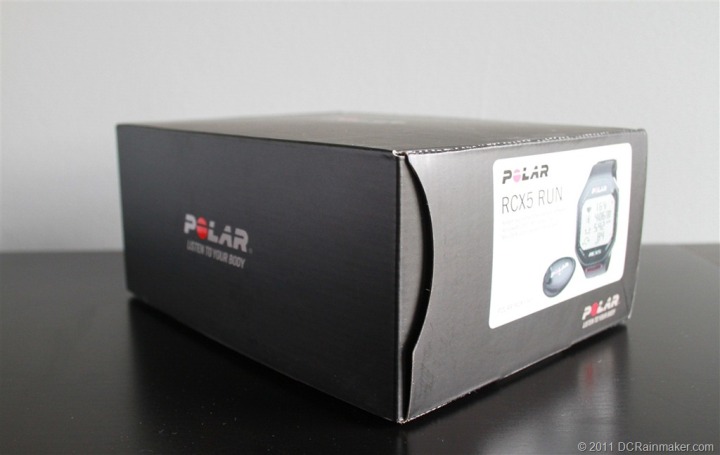
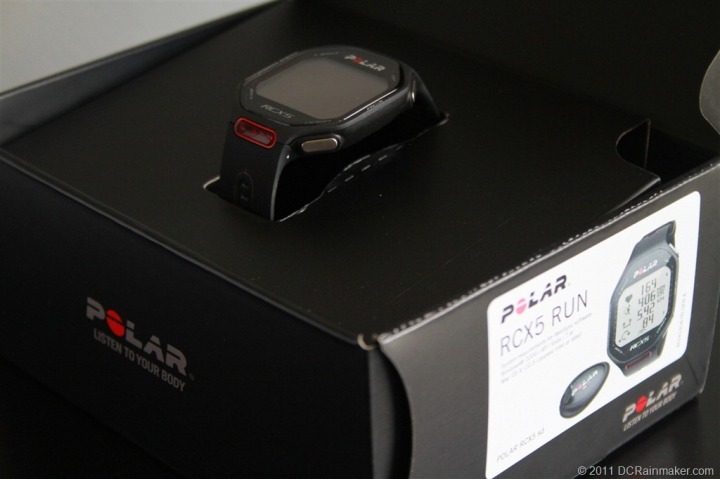
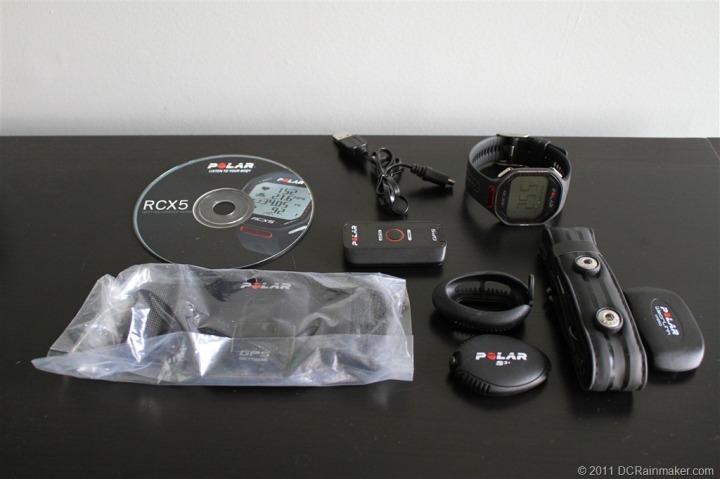
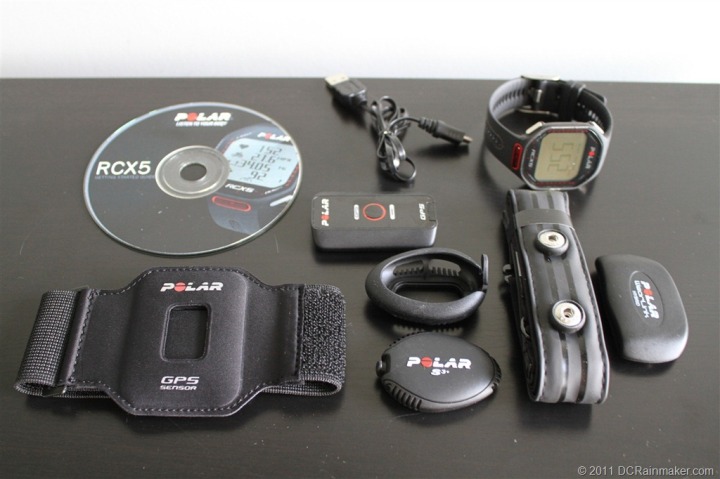
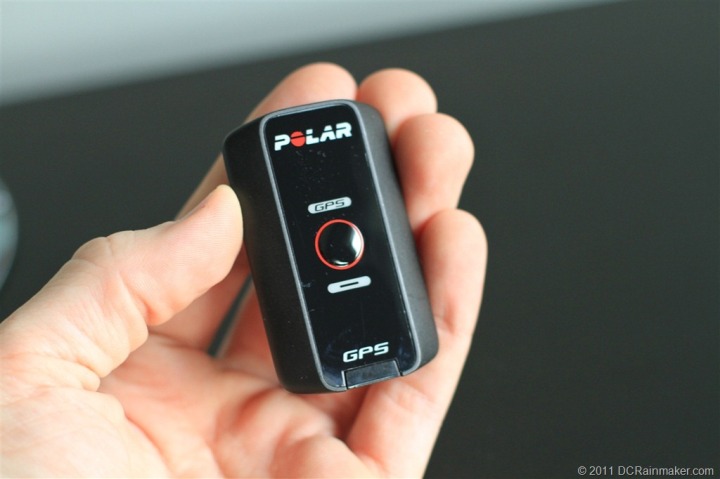
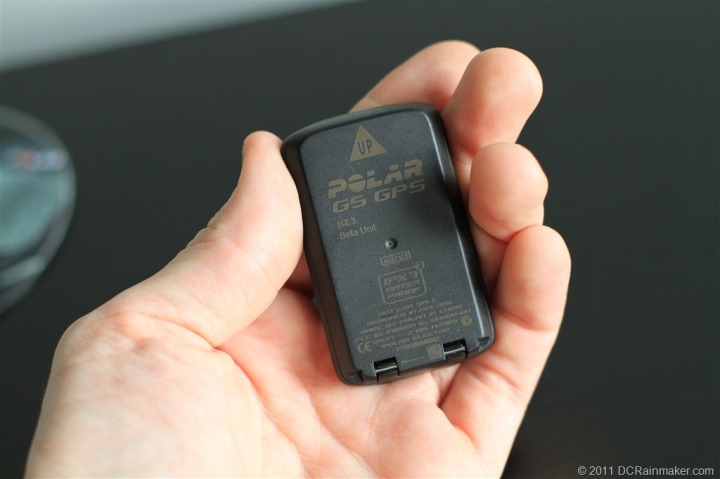
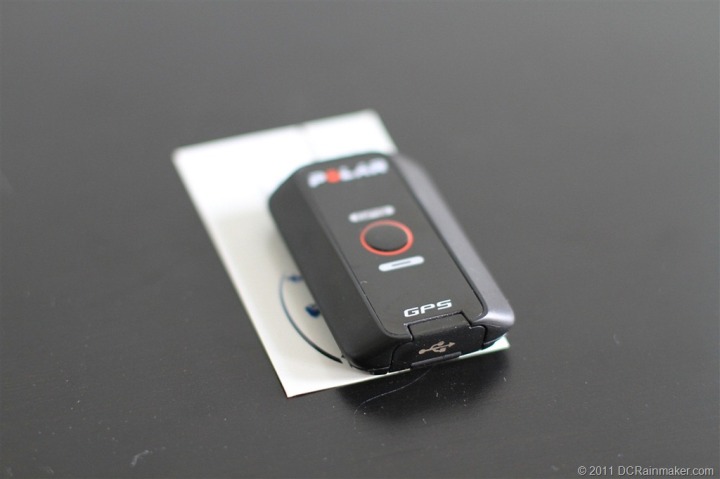
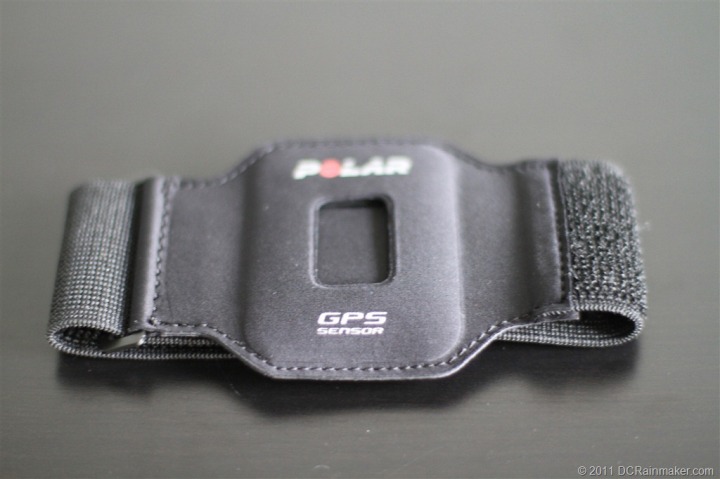
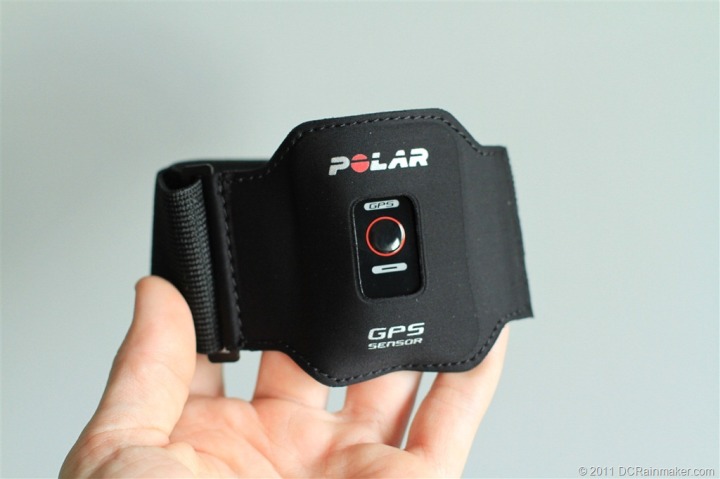
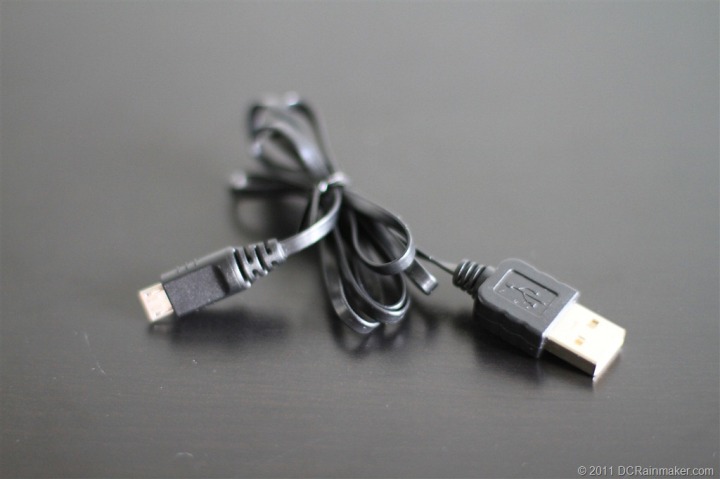
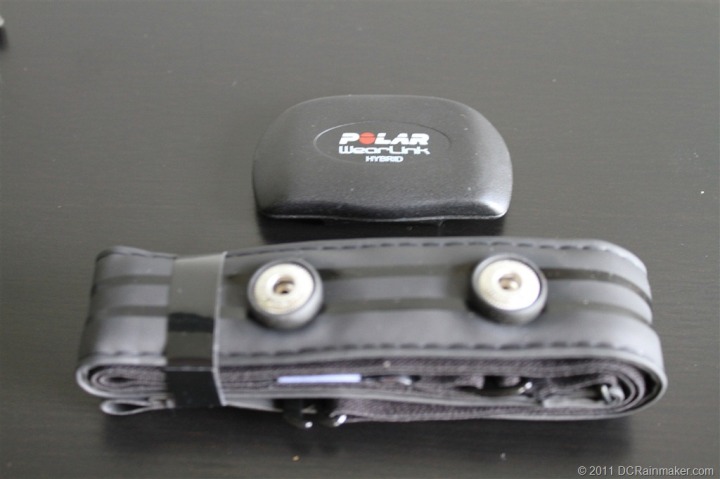

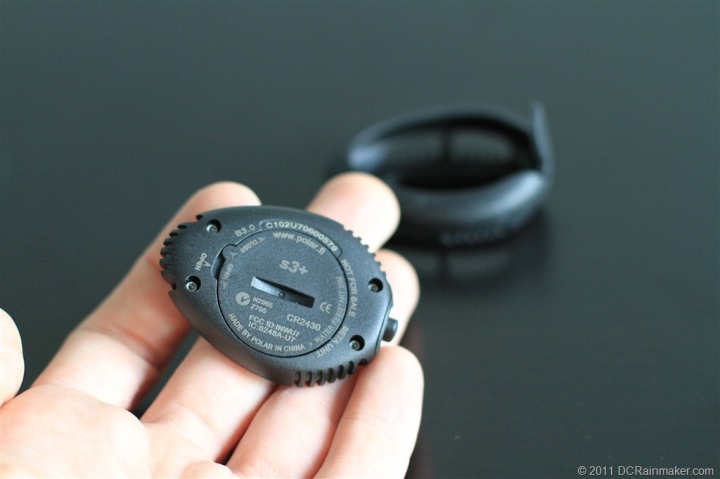
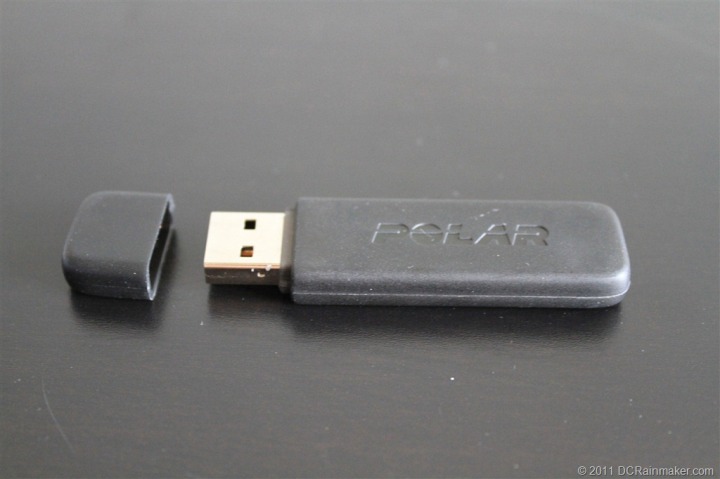

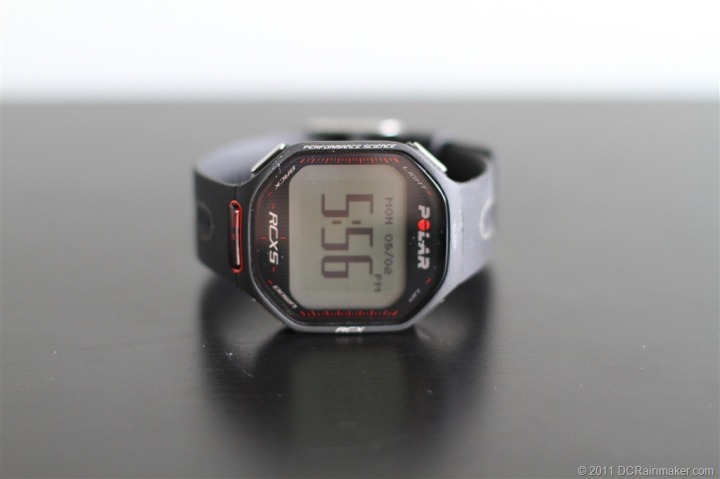
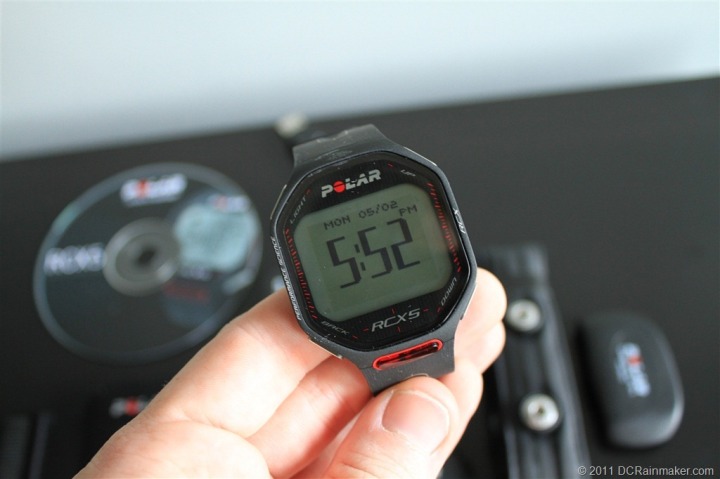
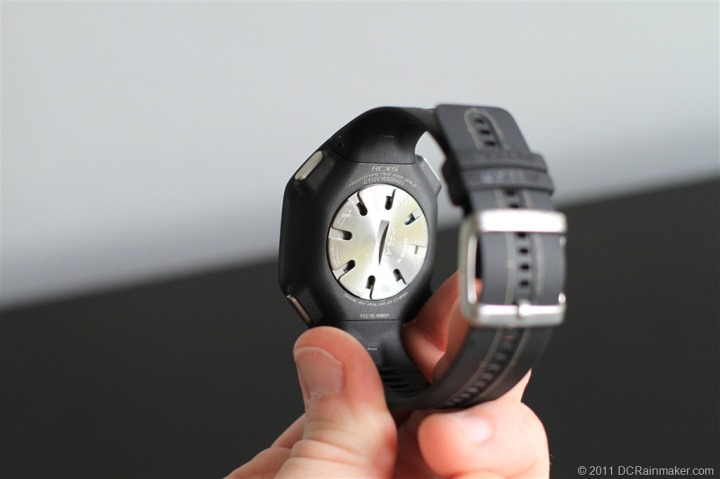
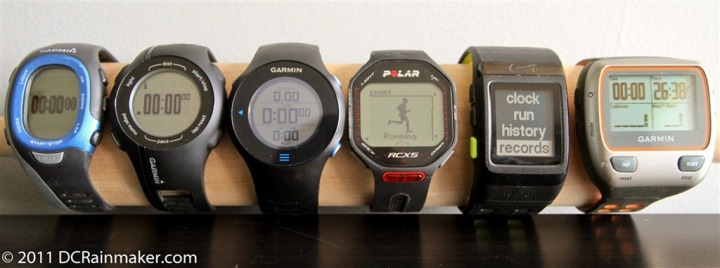
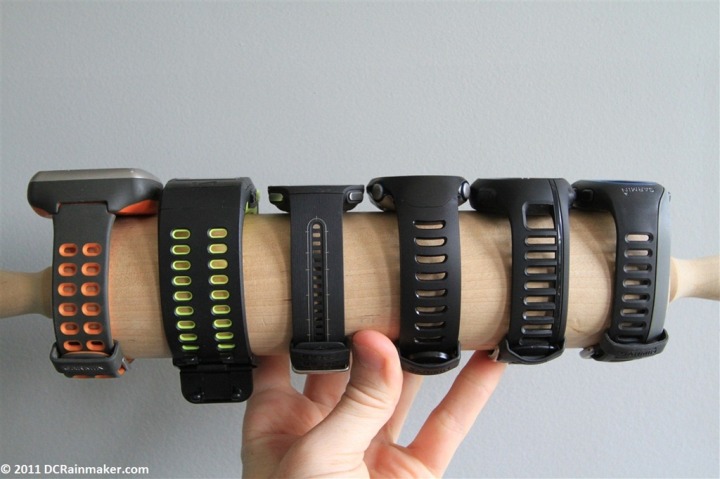
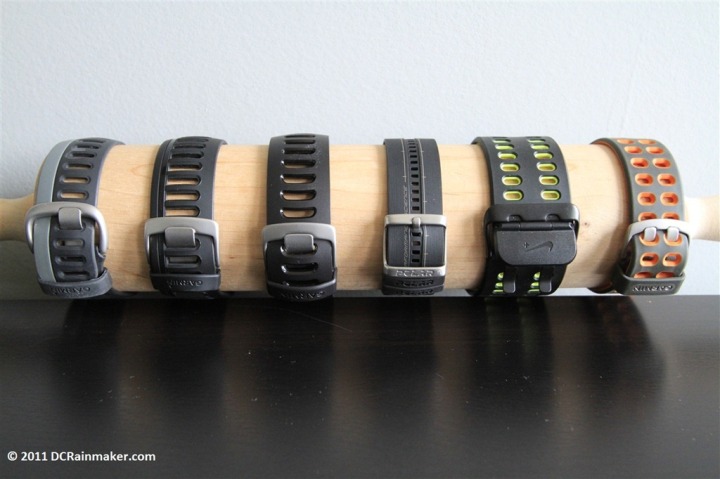
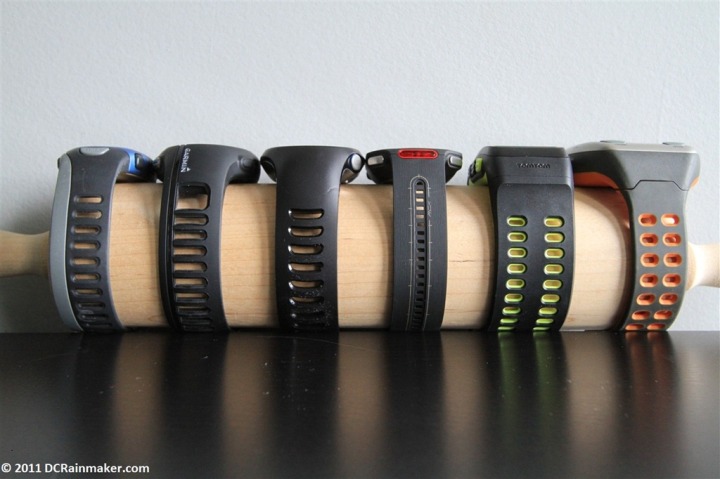
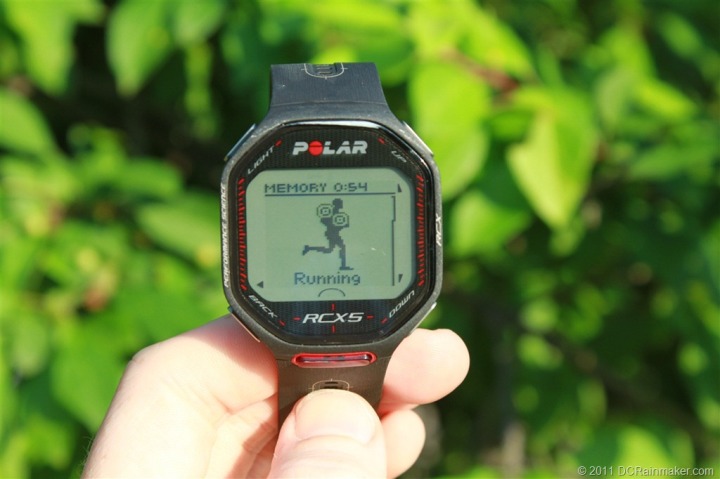
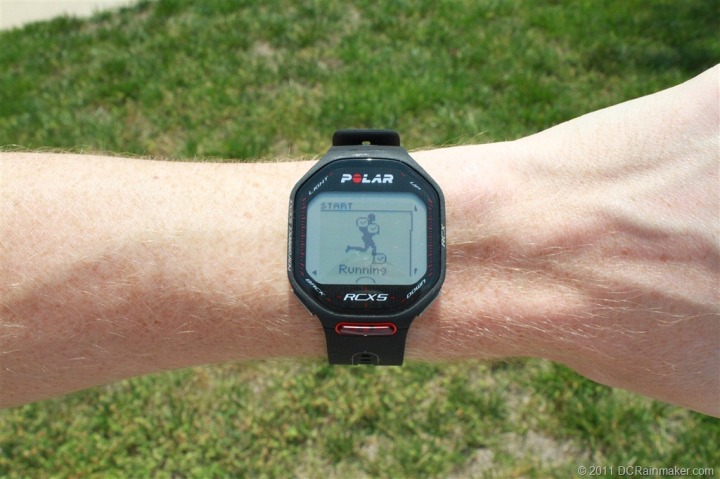
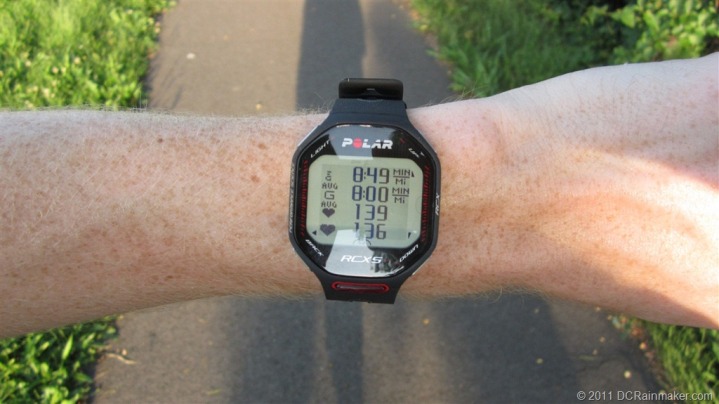
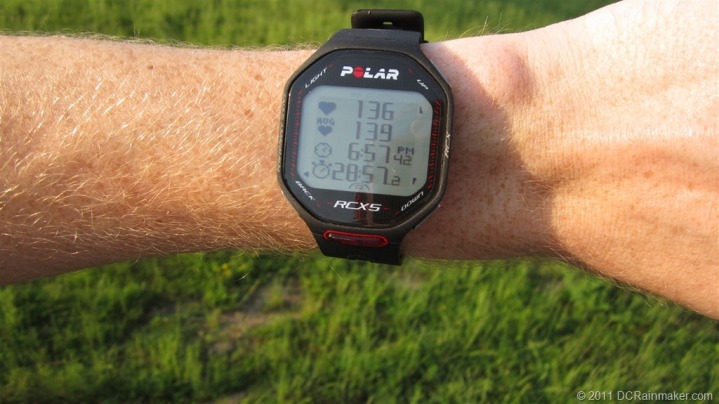
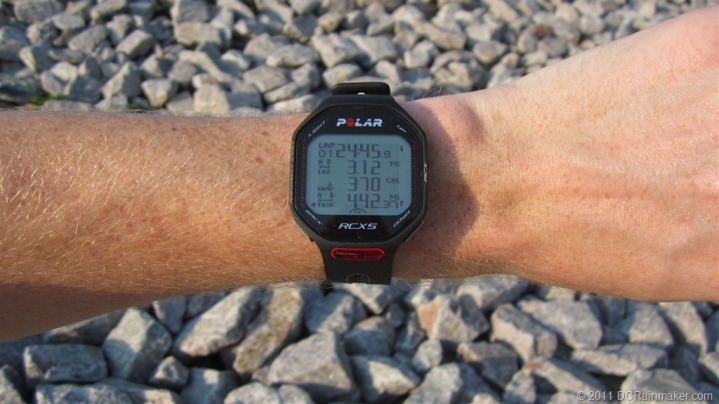
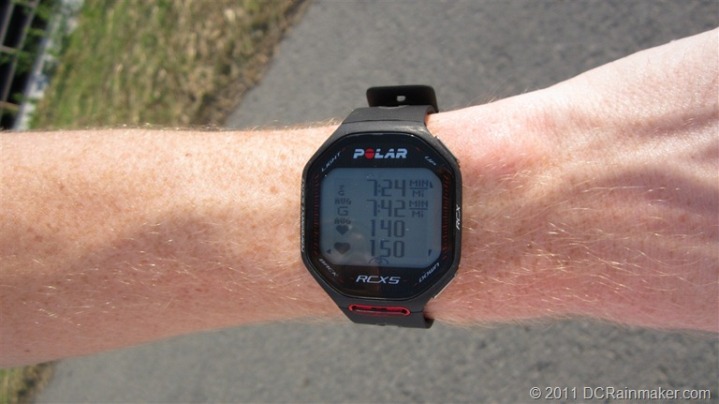
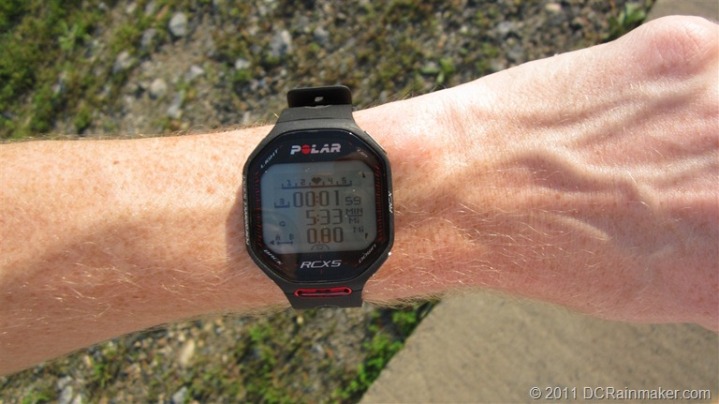


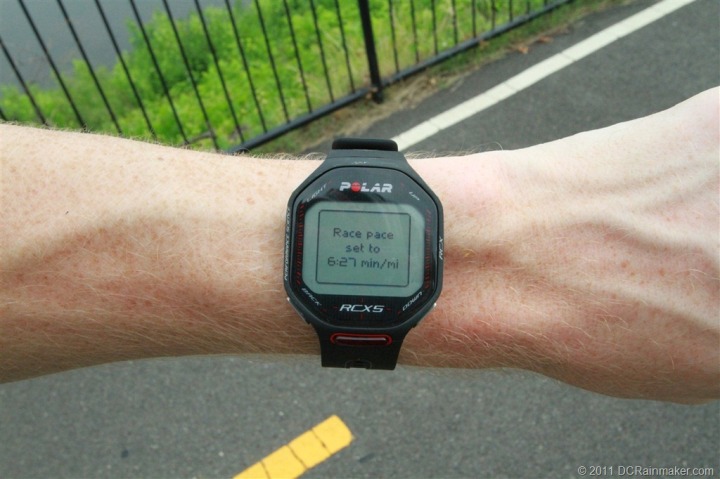
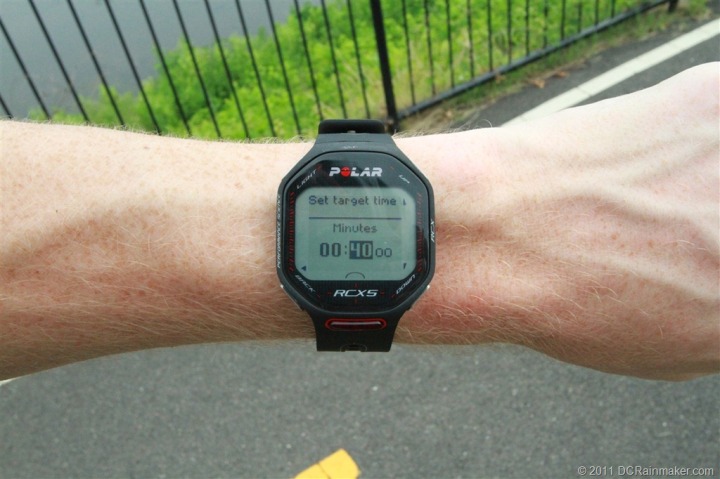
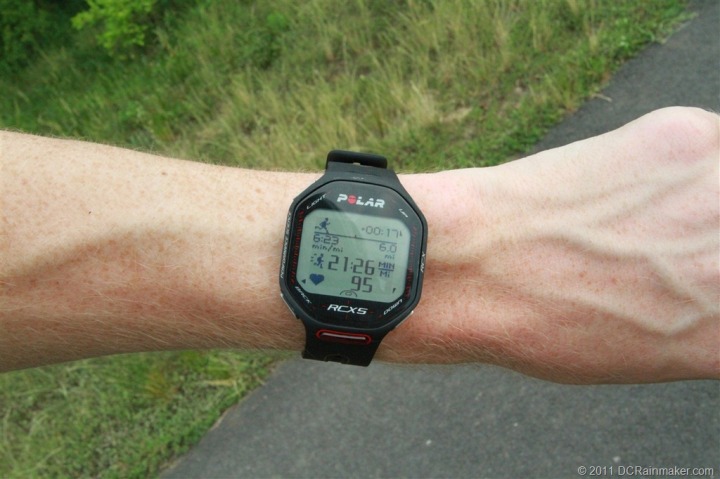
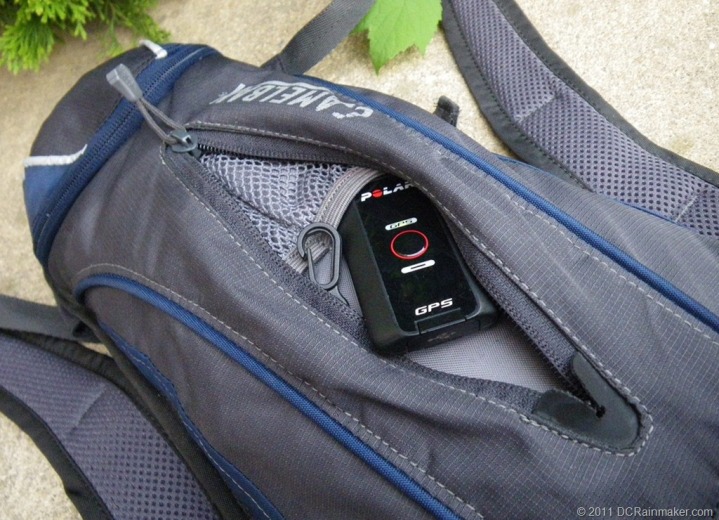
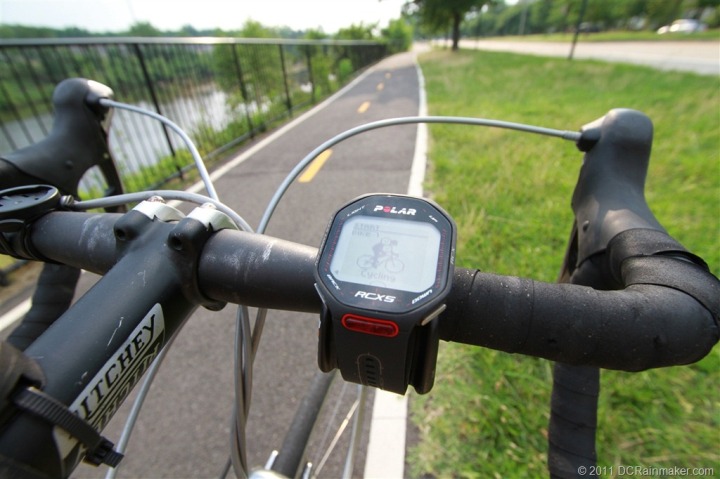

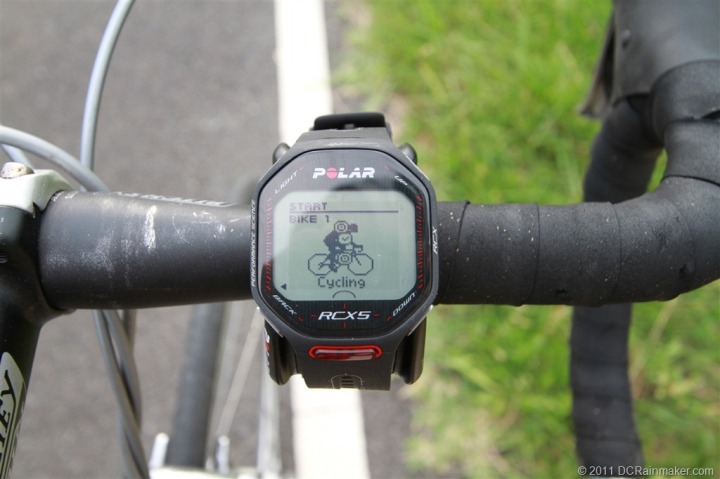

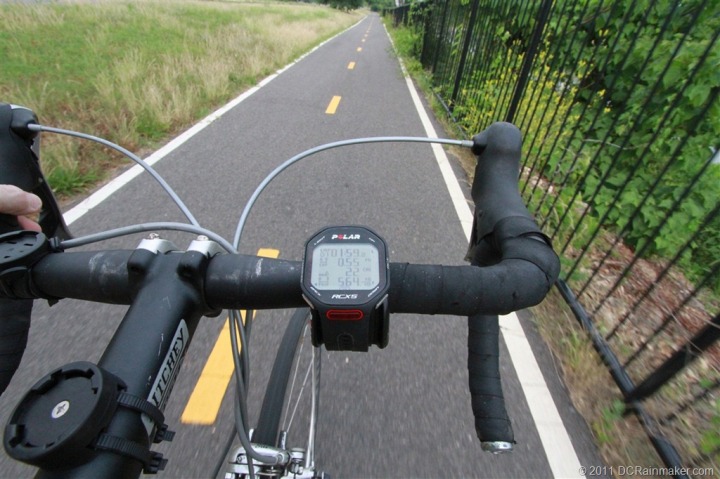
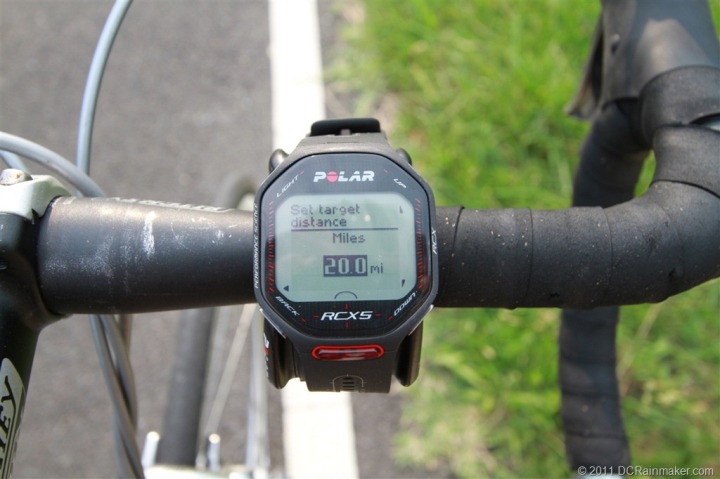
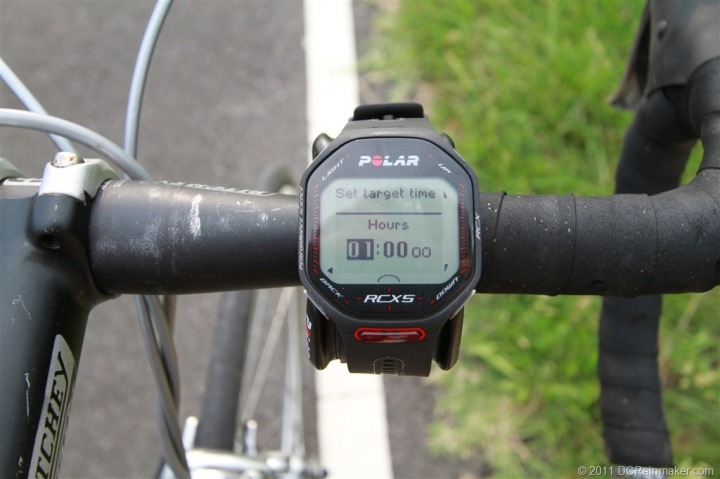
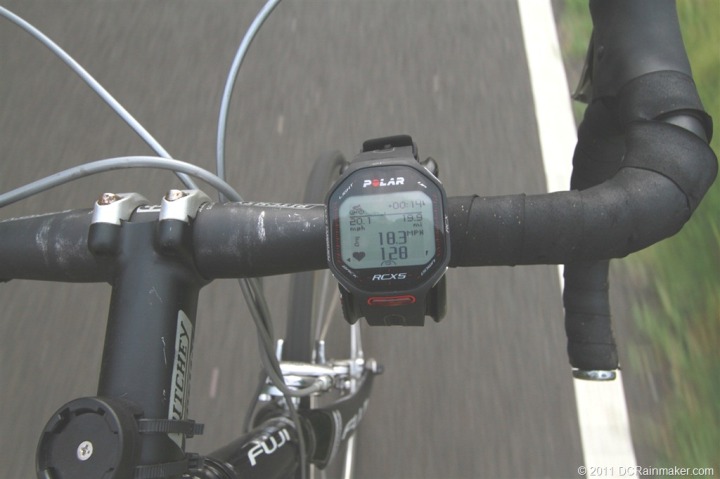
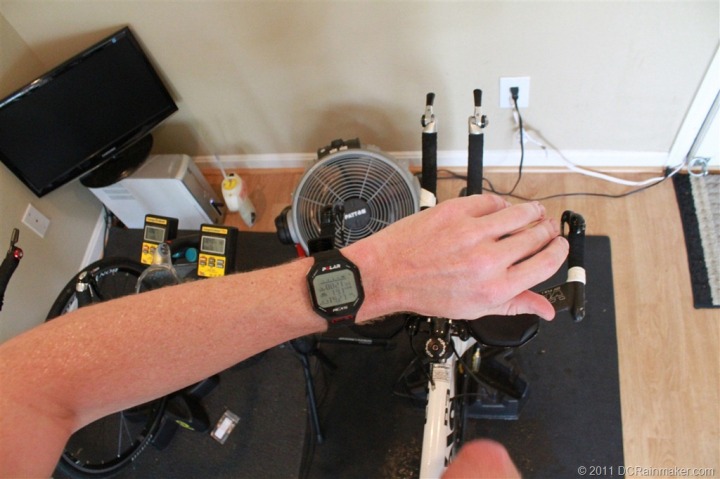

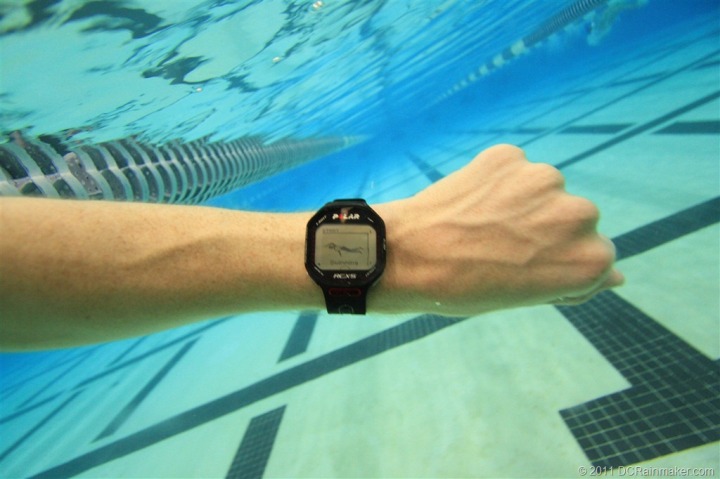

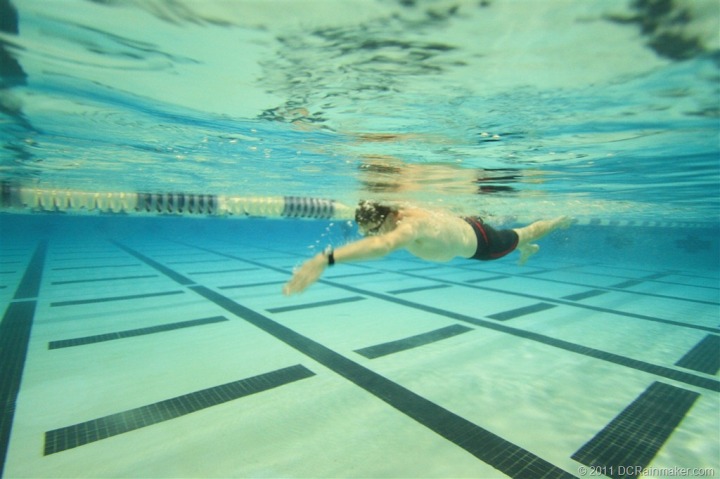
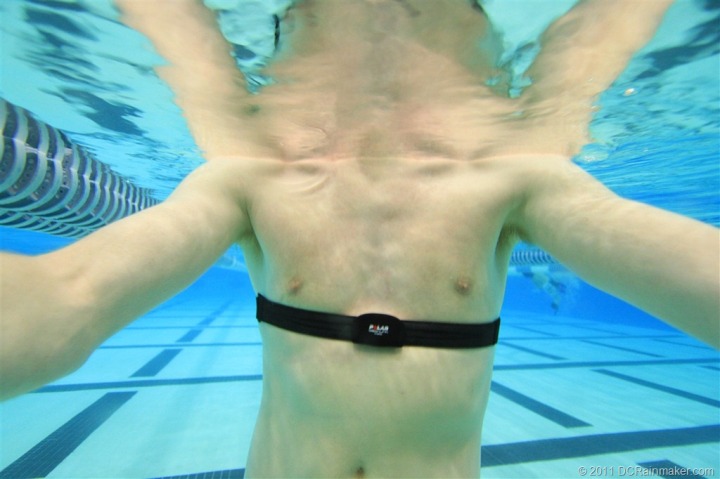
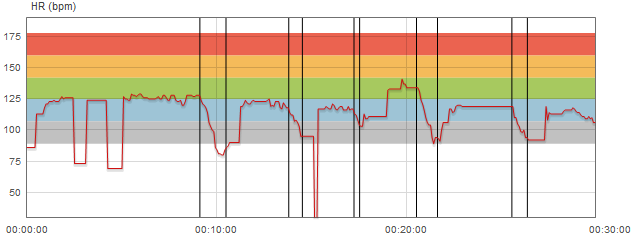
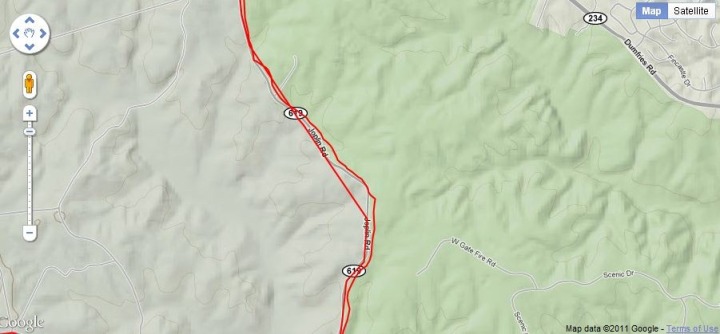
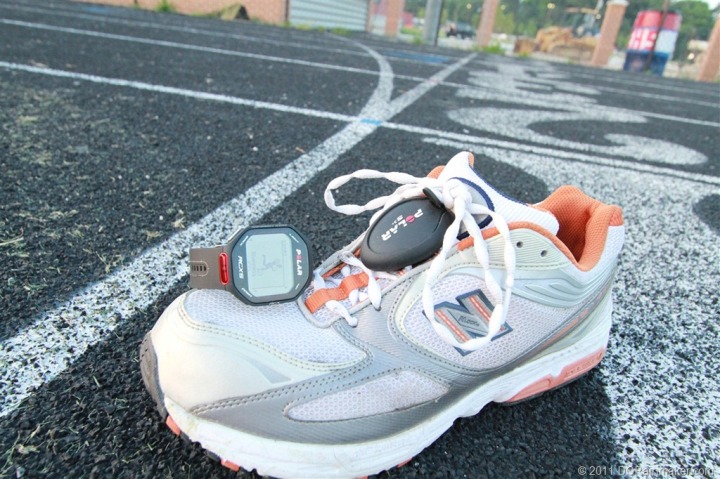
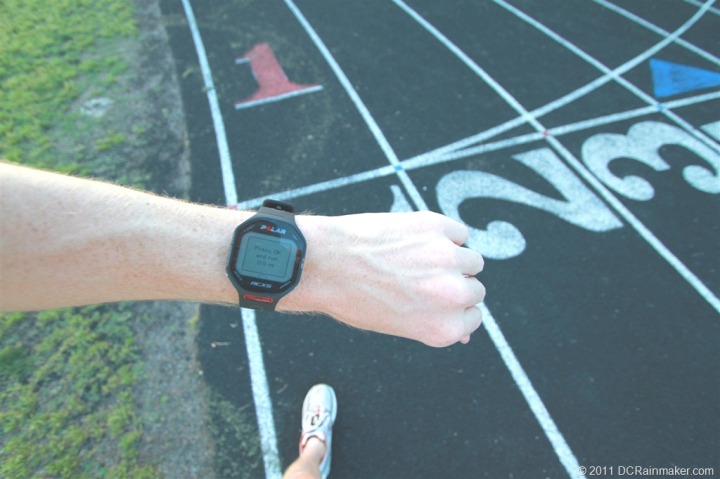
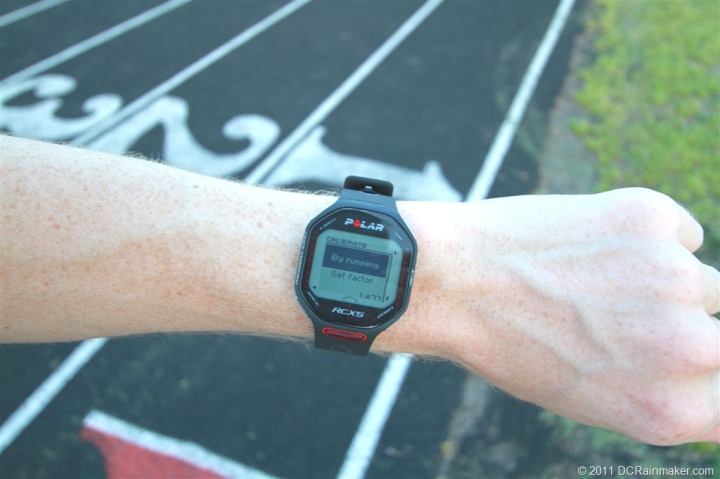
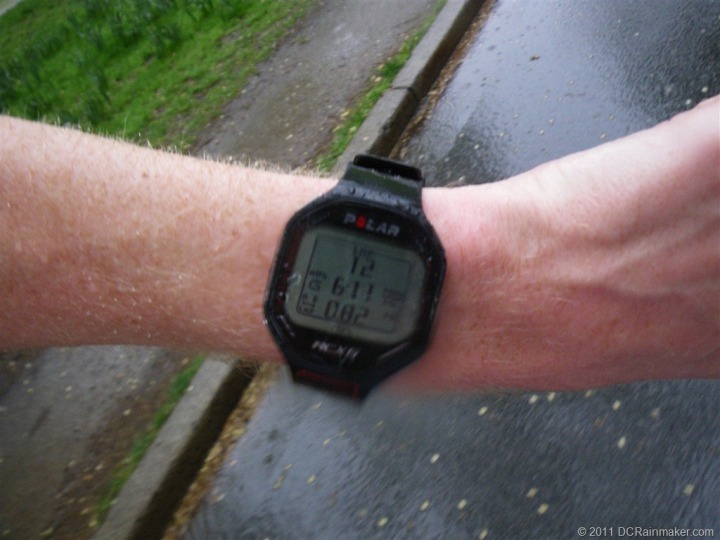
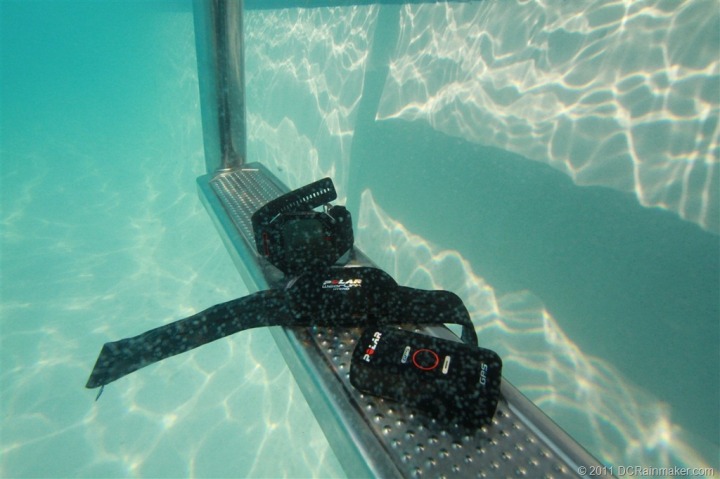
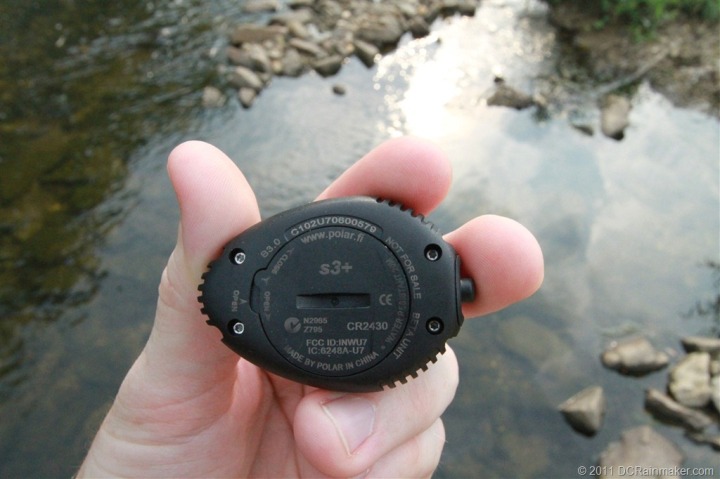
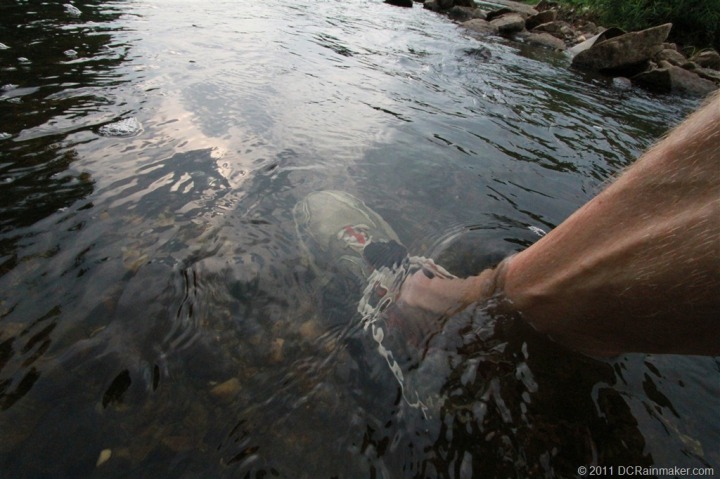
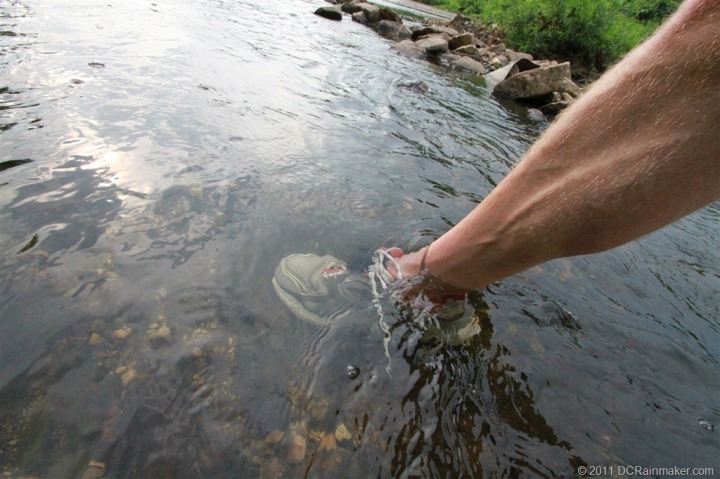
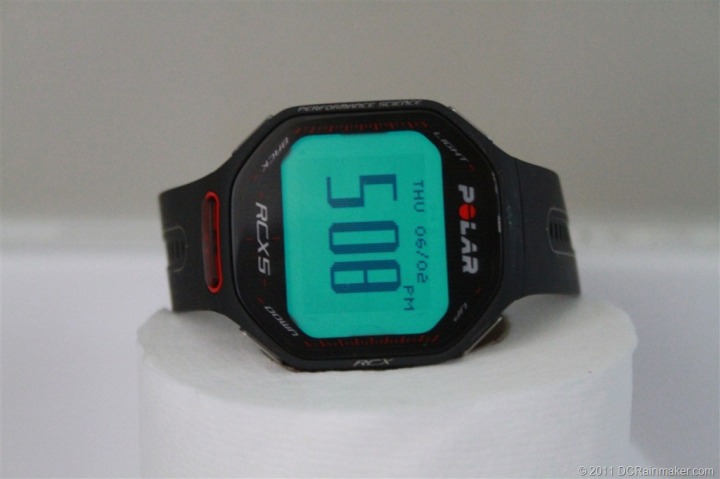
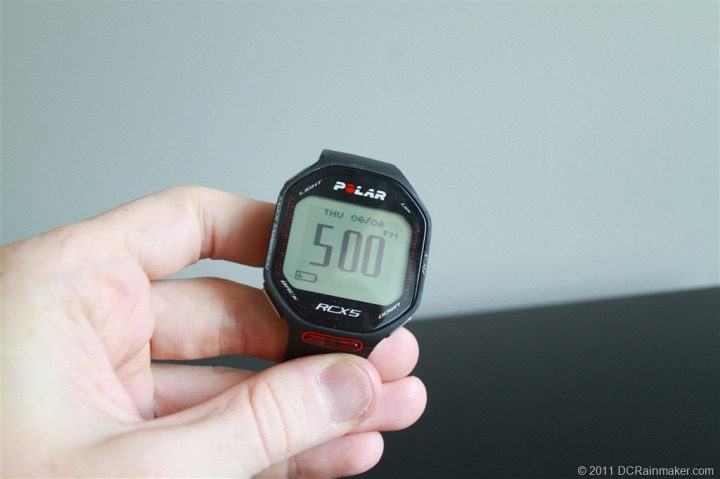

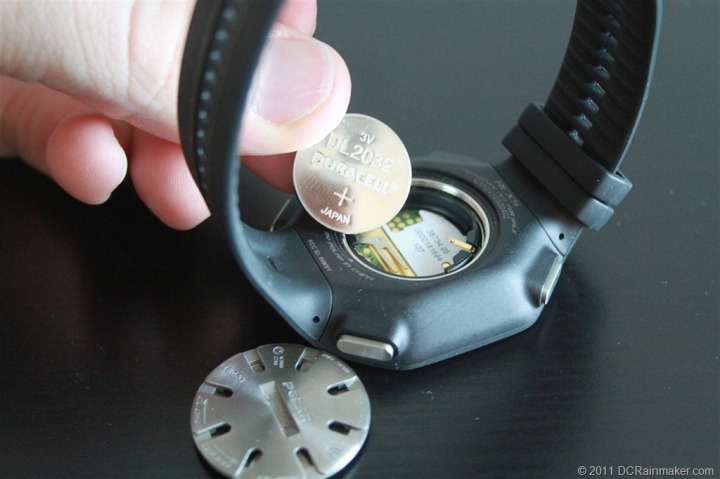
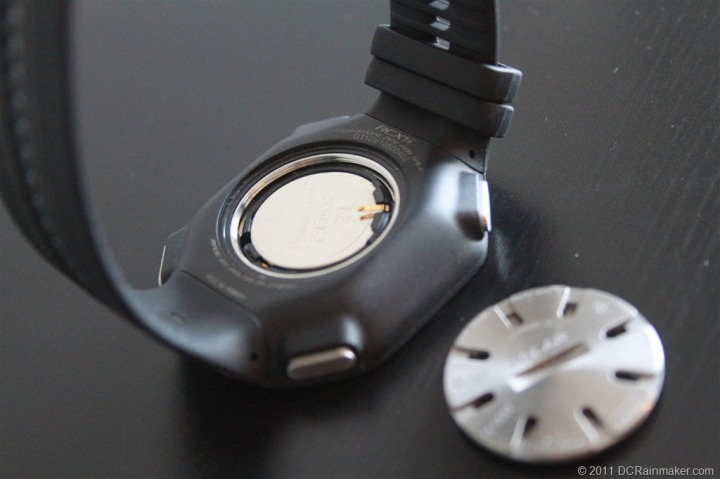
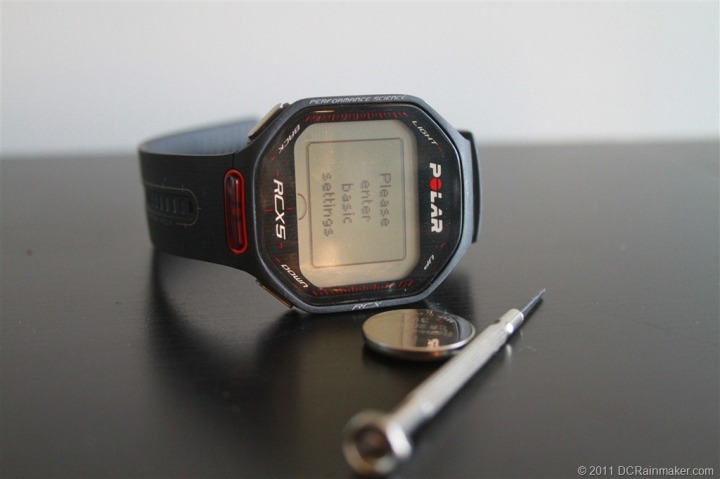

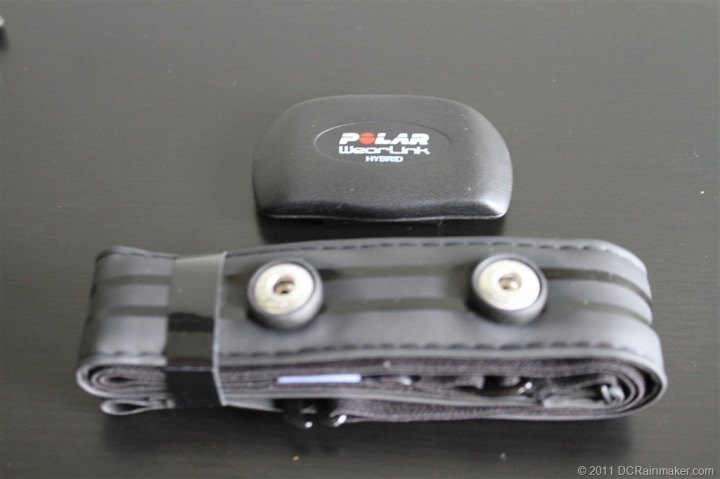


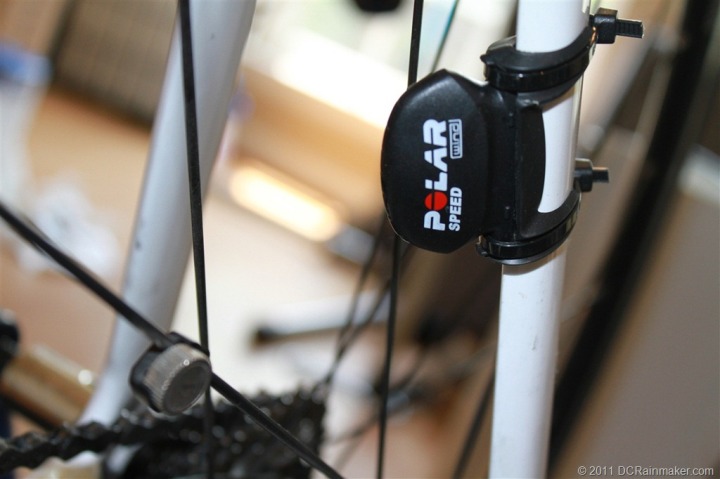
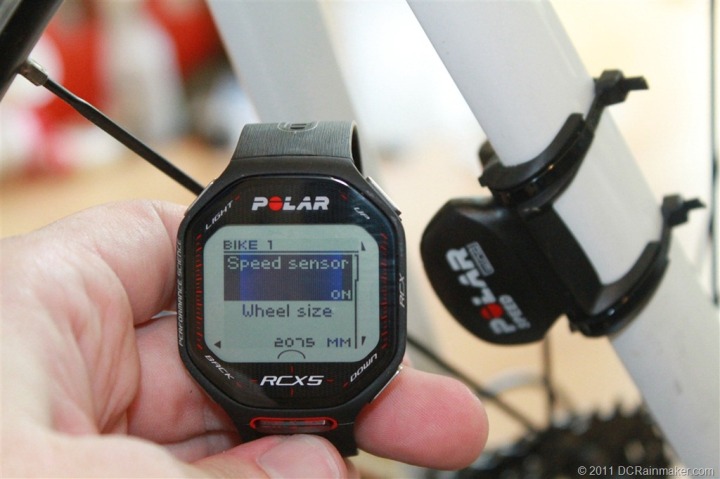
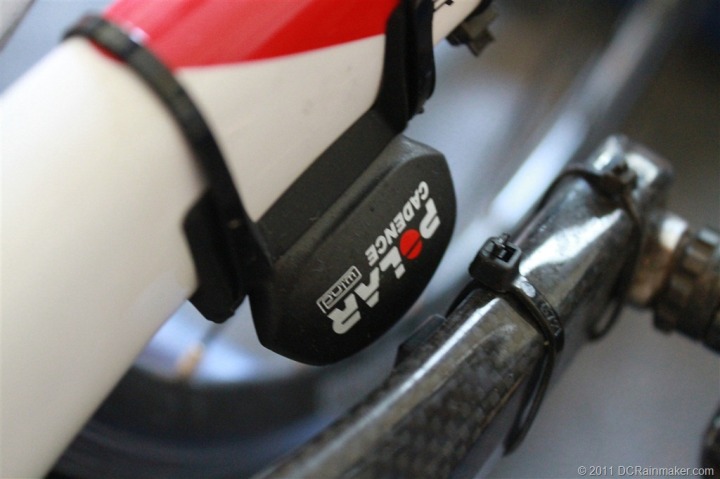
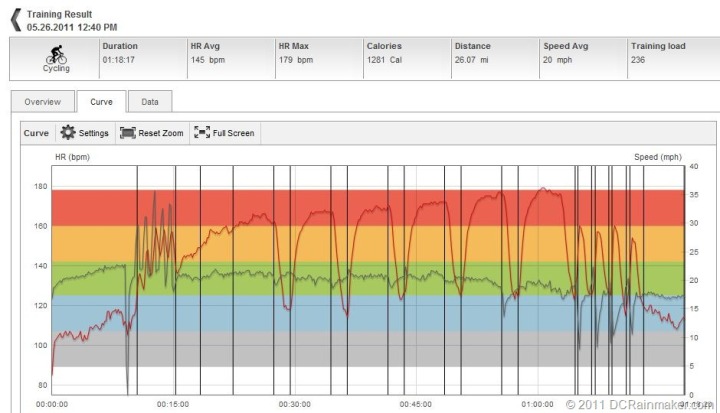
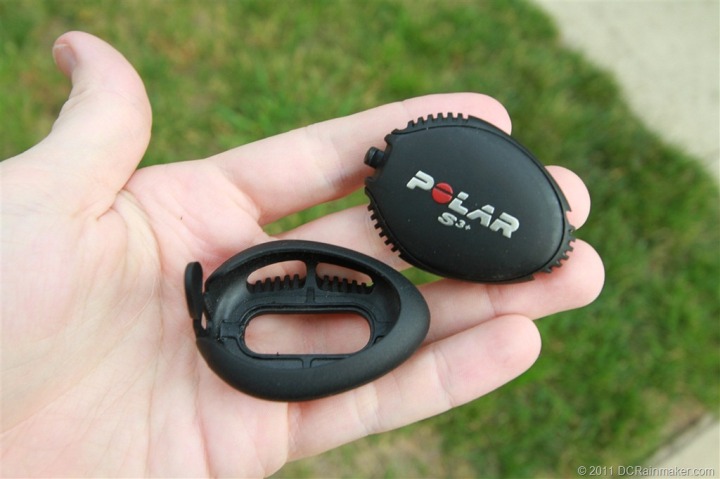

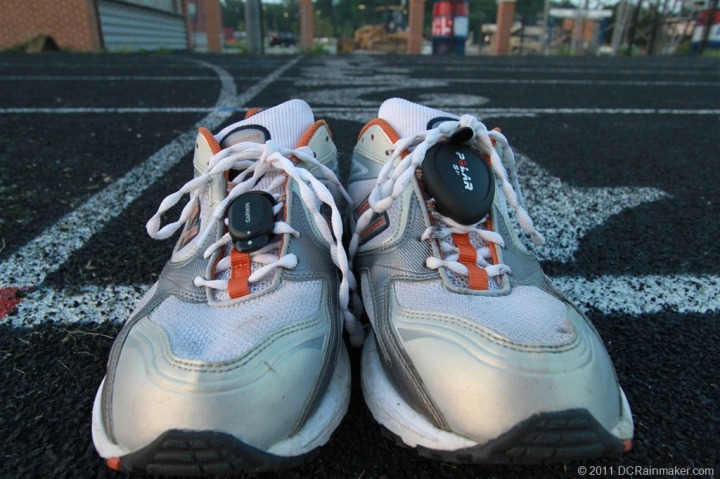
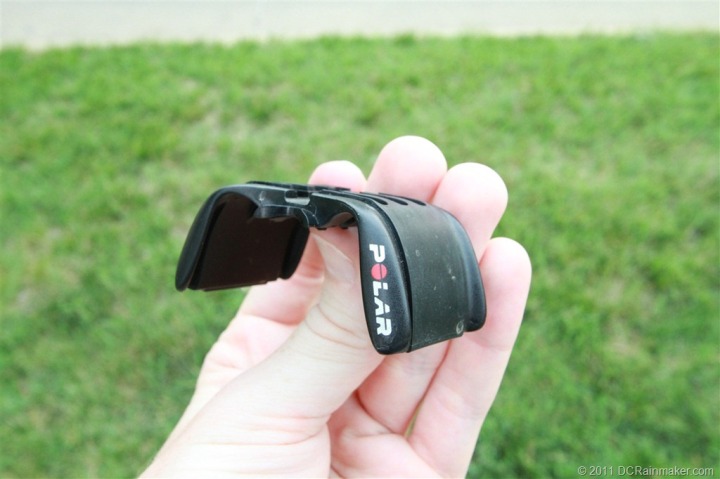
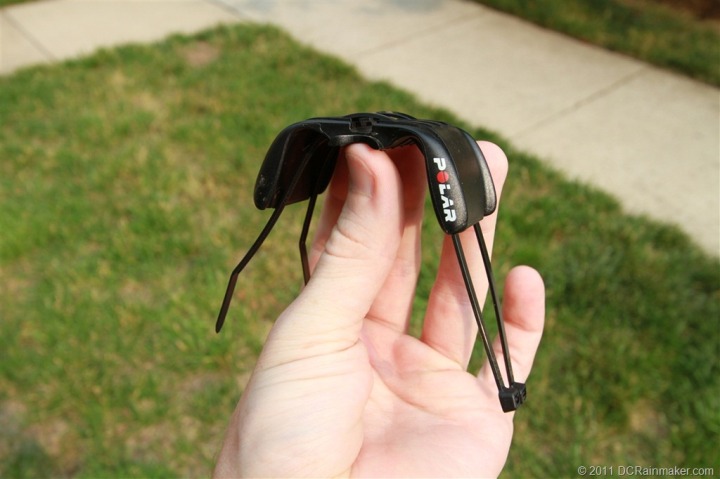

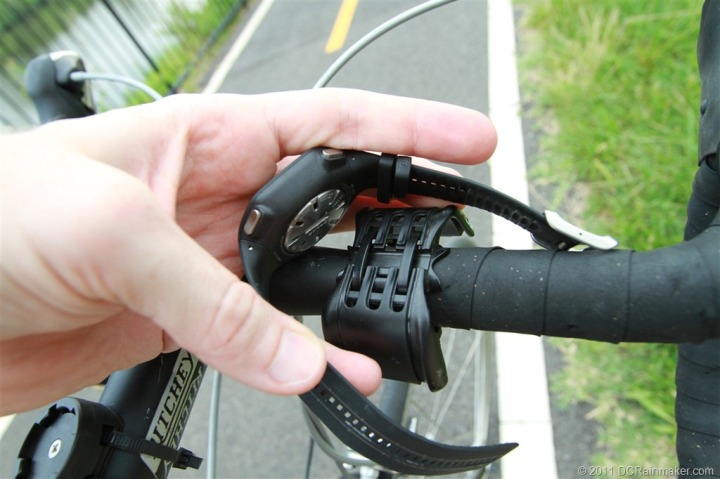
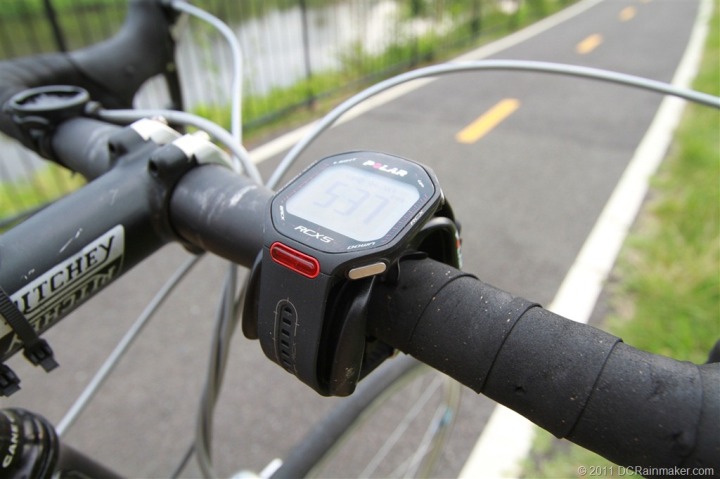
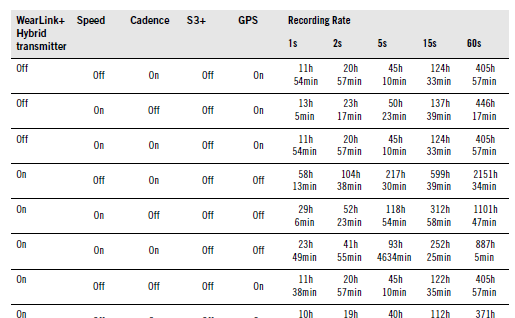
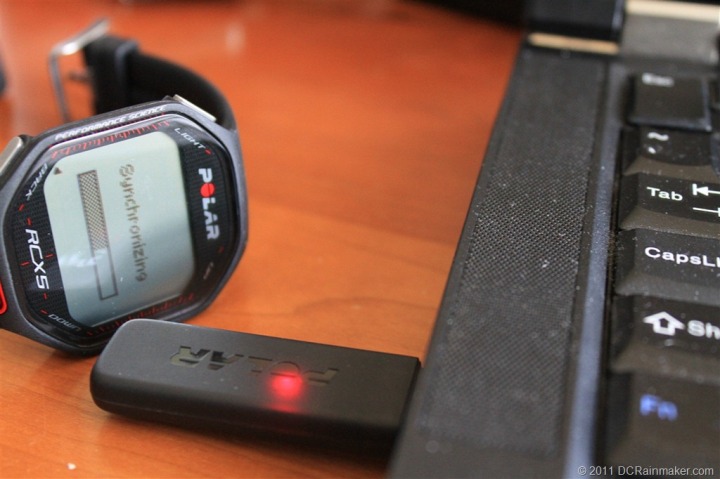
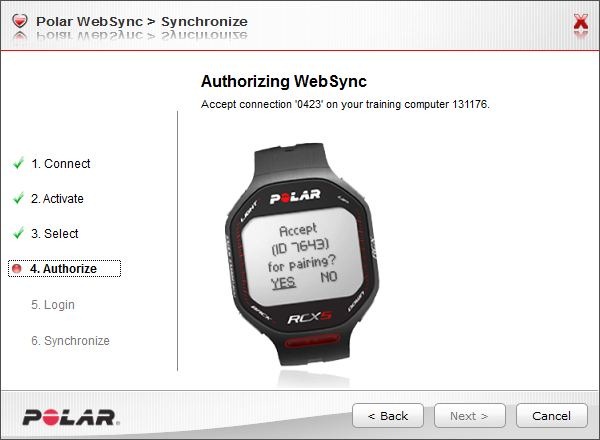
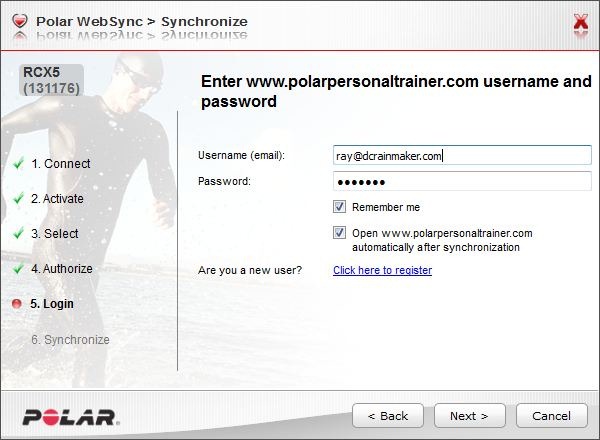
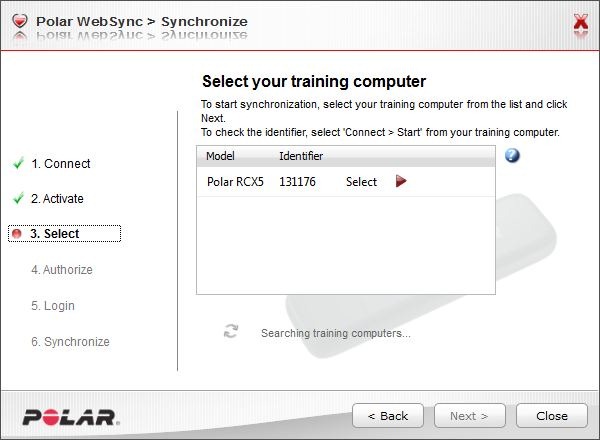
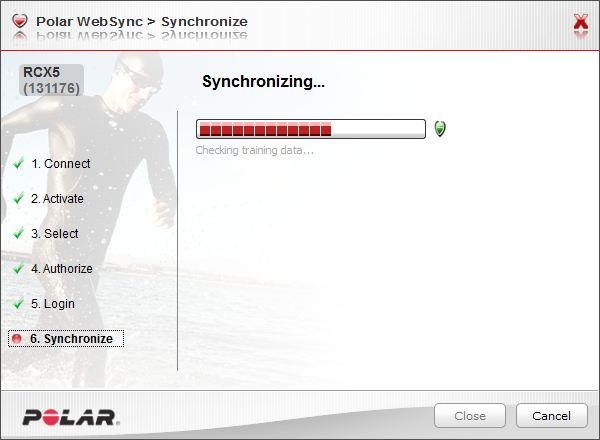
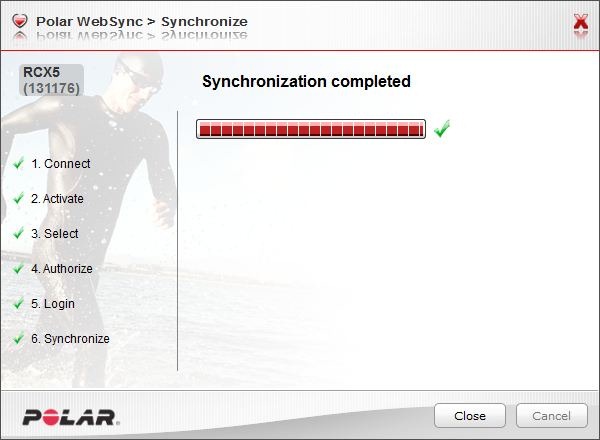
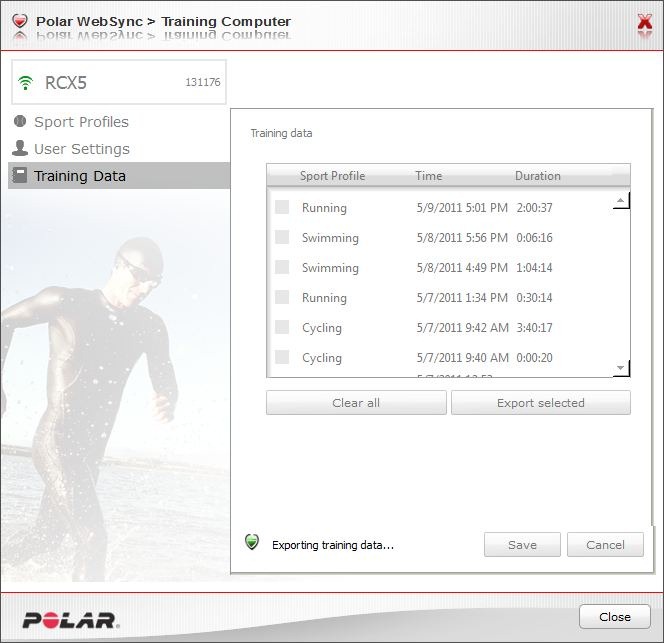
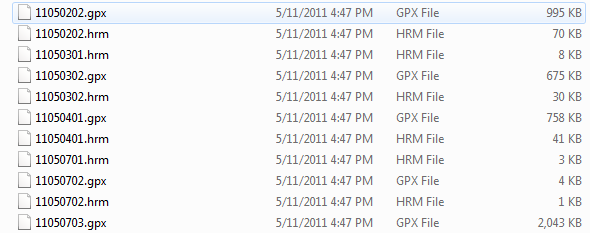
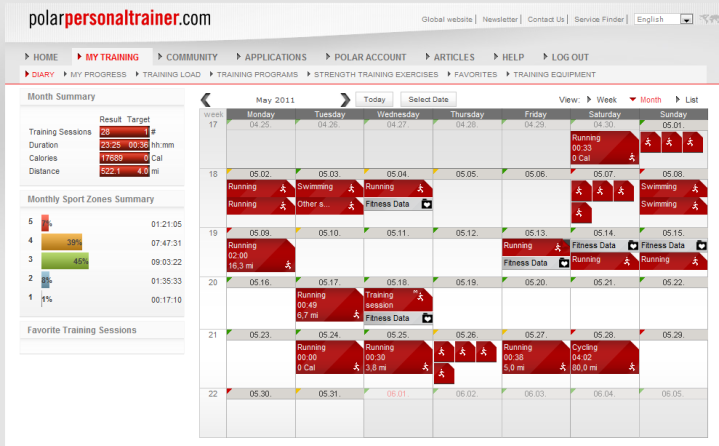
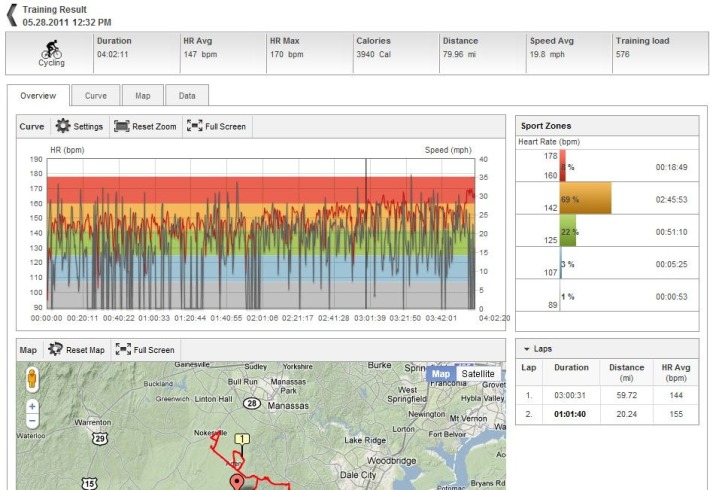
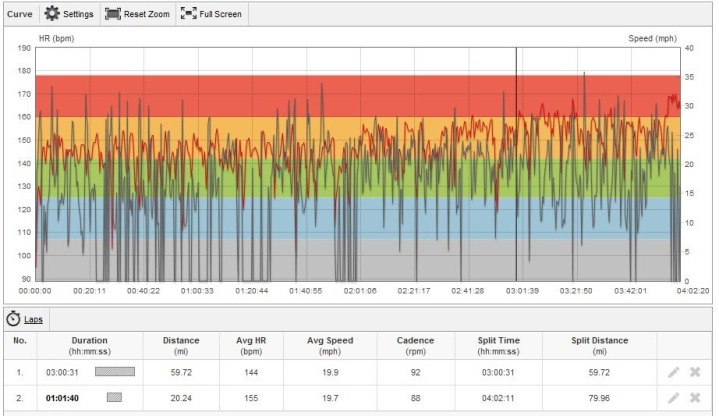
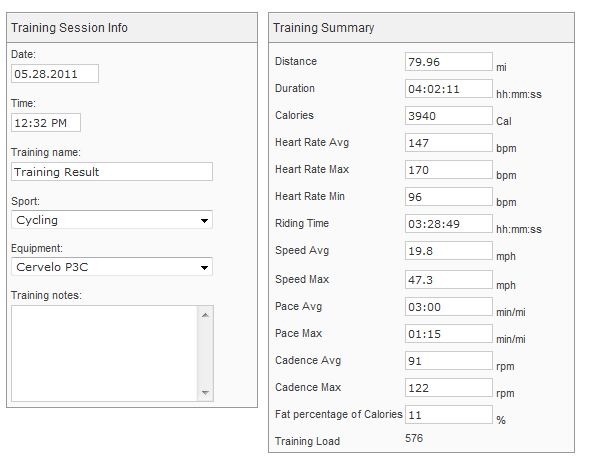
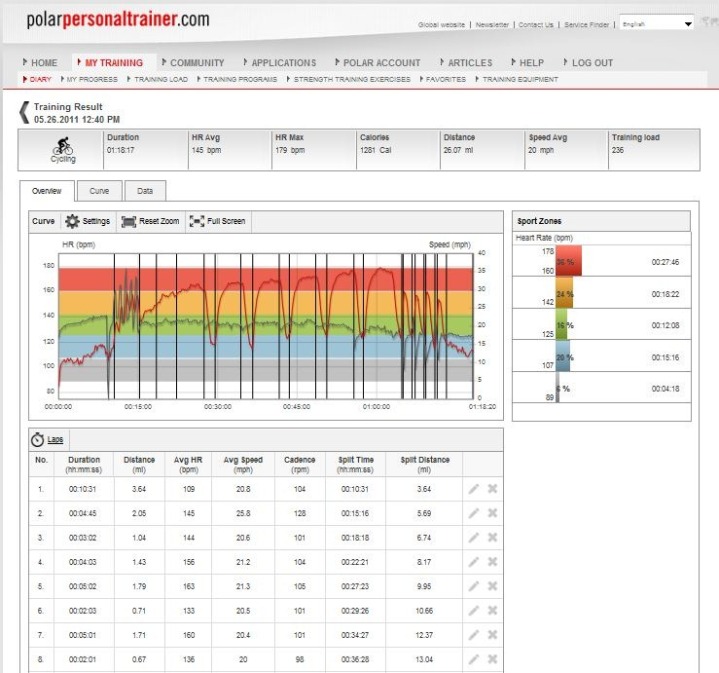

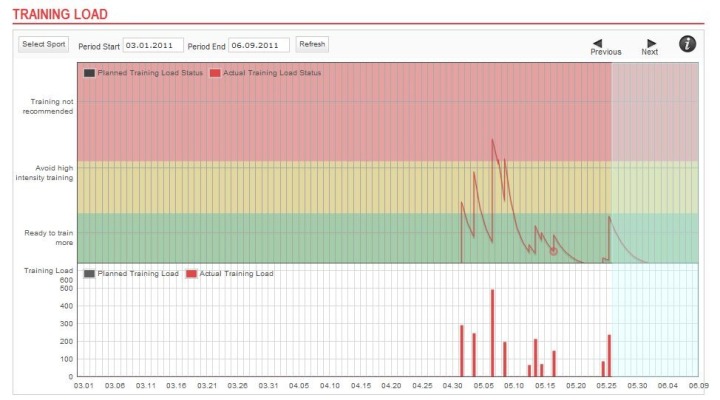
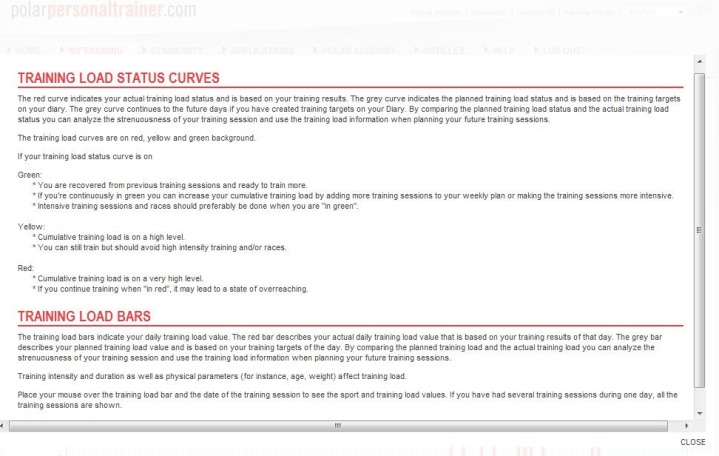
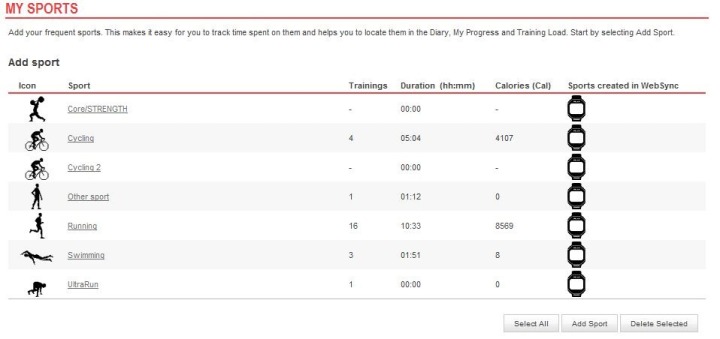

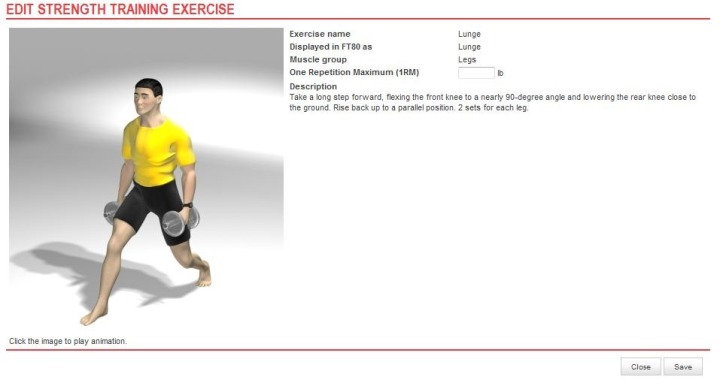
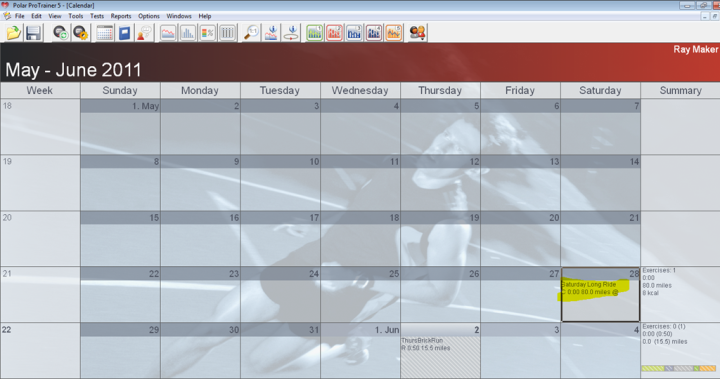
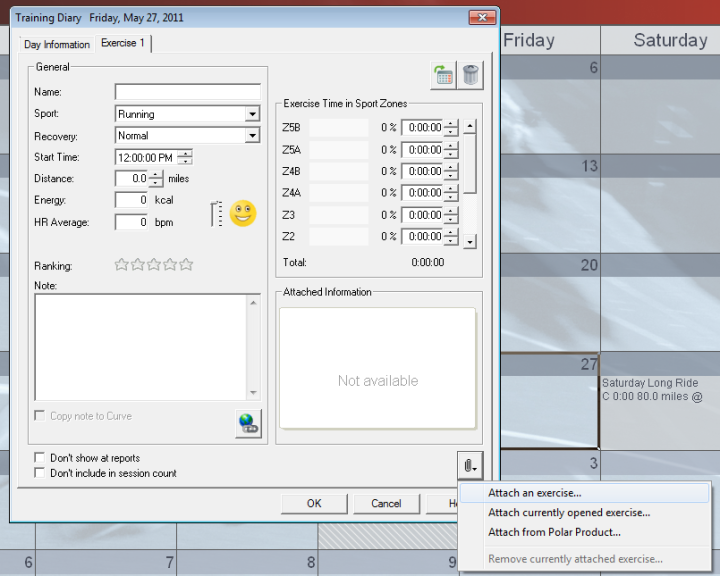
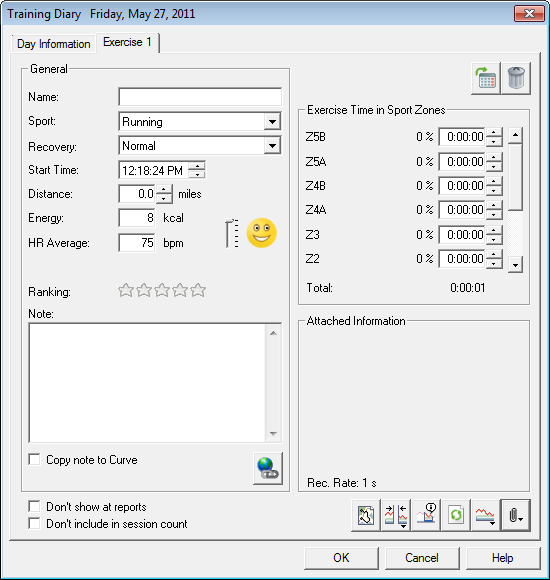
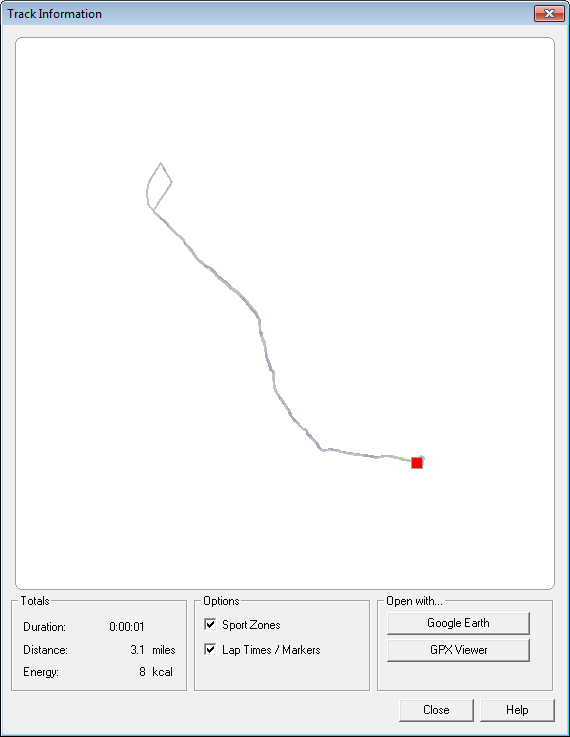
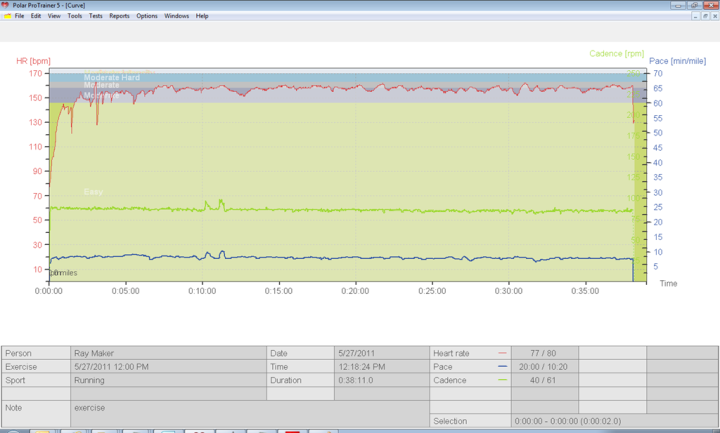
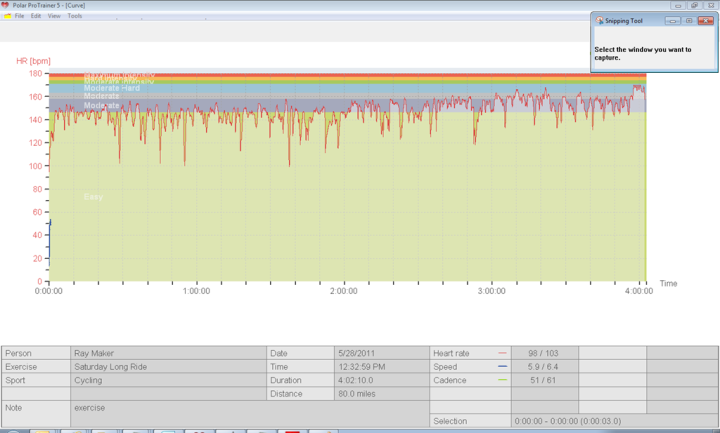
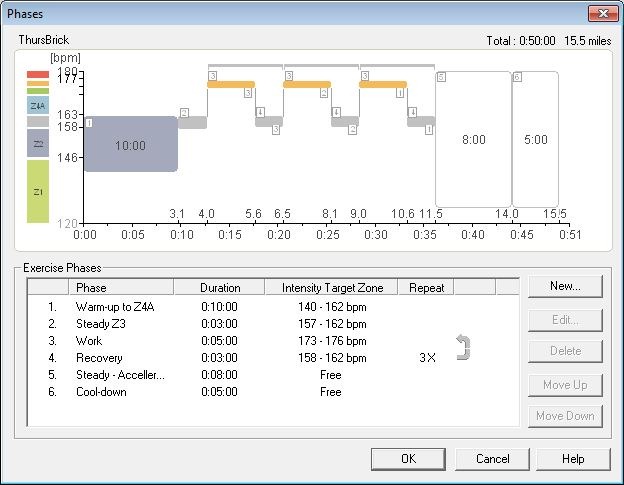
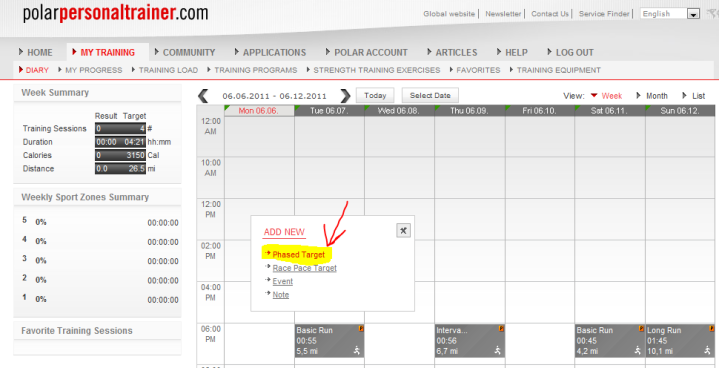




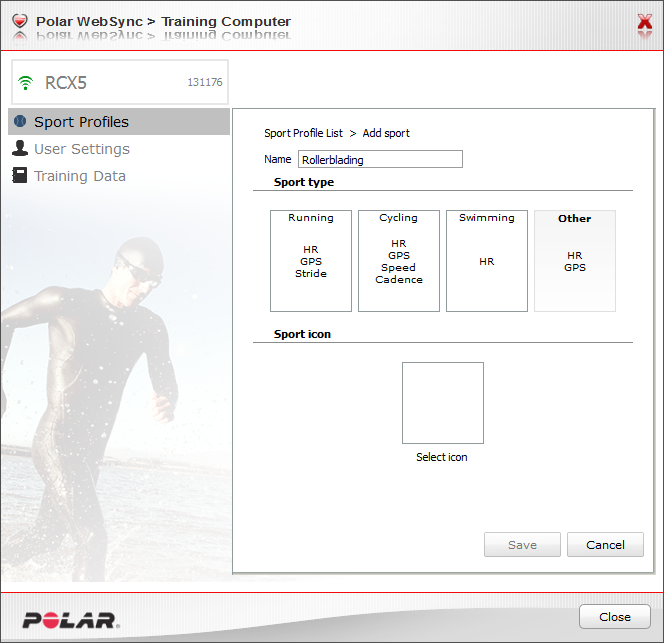
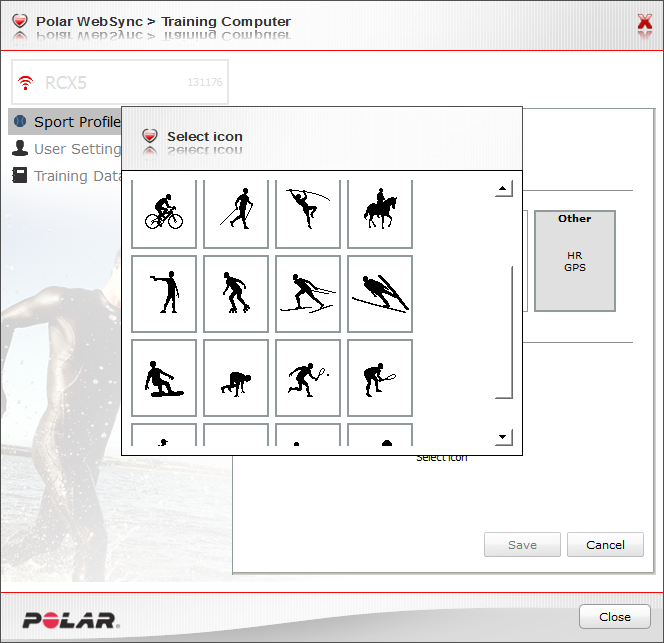
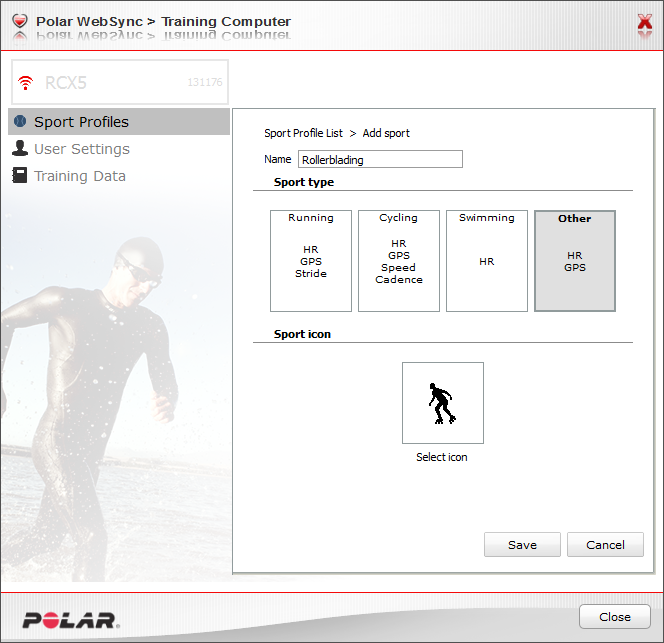
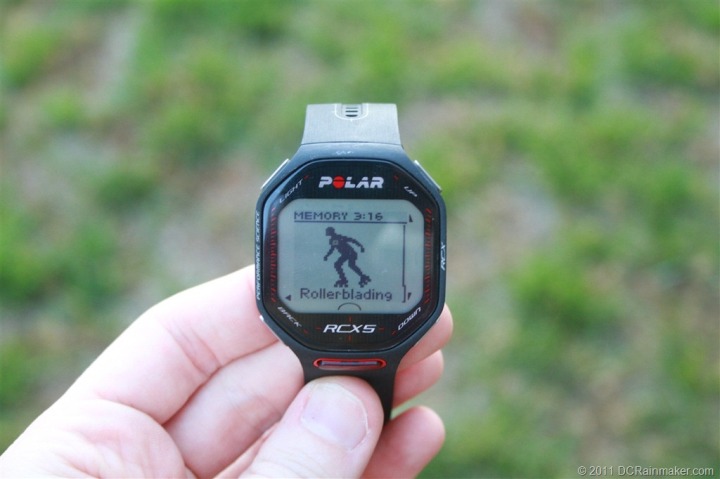

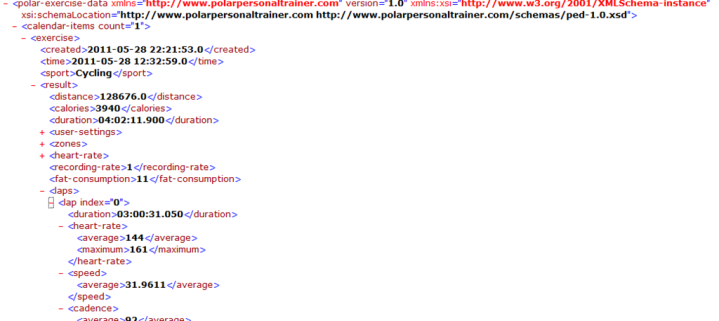
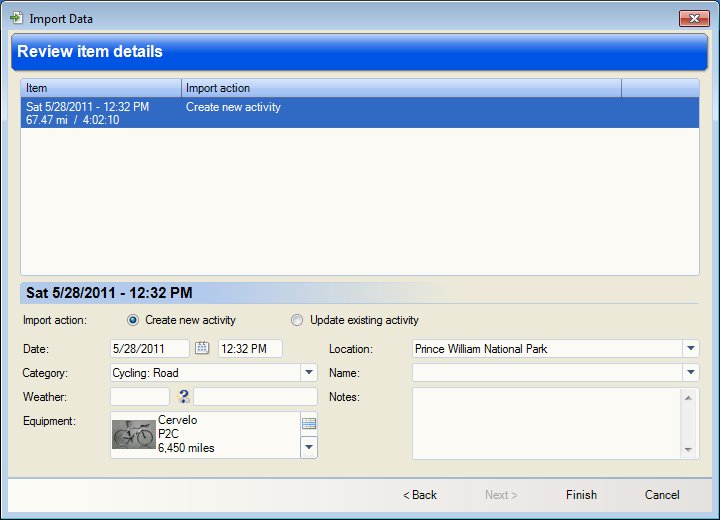
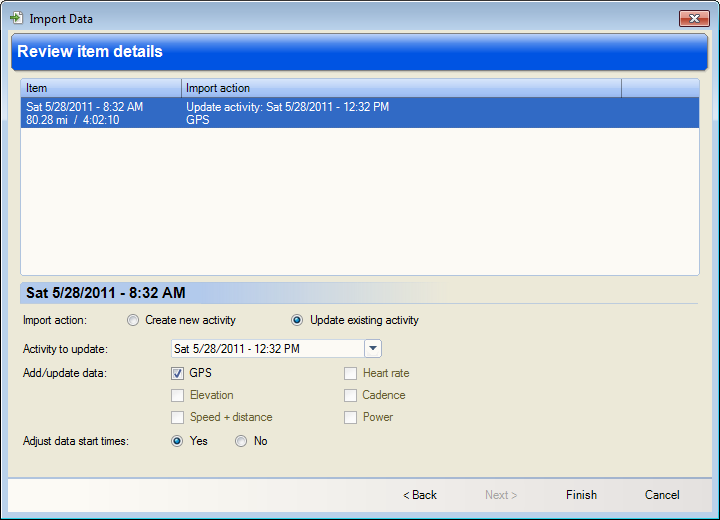
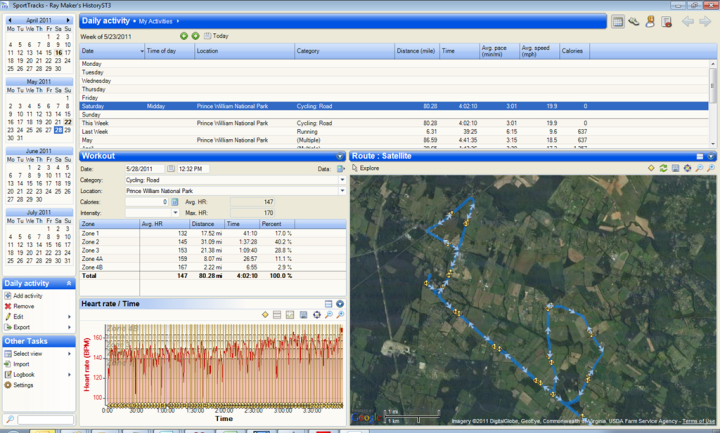
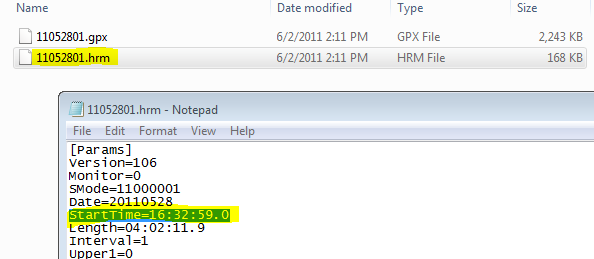

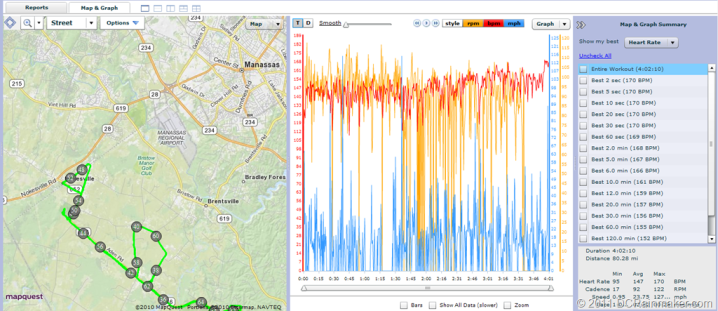





















The RCX5 performed very well for a few weeks but now it’s stuck on cycling sports profiles and can’t any more be shifted to running profile which is my favourite sport profile. Tried everything……..
Hi Albert- Have you tried ringing up Polar support? They may be able to get you un-jammed.
Great review! Does the RCX5 have vibration alerts like the Garmin 310xt? Thanks.
No vibration motor.
My concern is that I must be able to hear my heart rate target over any ambient noise involved in my sport. I currently use the 310xt but the heart rate (in the watch) stopped working (I tried a different Garmin strap and the watch does not work). How is the sound on the RCX5? Is it as loud as the 310xt? Thanks.
first, thanks for the great reviews. quick question regarding the RCX5: would you say the foot pod or qps pod would be your preferred method of getting pace/distance? I run in the mountains, as well as down at sea level so I’m wondering if one is more accurate than the other. thanks very much.
Hey,
first of all thank you for every single one of your great reviews! I love your page beeing a bit of a hardware addict. Excuse my english, if there are some mistakes – I am from germany and a bit rusty when it comes to writing ;)
I recently bought a rcx5 unit, after I got a bit upset about my old fr 210 and the growing interest in swimming. I am pretty happy with it so far, except for the realtime pace function – it jumps around within 2 minutes/km hence it’s pretty useless, while the overall total accuracy is pretty good. My fr210 was set to calculate the average pace over 1km laps and did a good job delivering believeable data. Did you suffer the same inaccuracy displaying actual pace and did you find any compareable function to the garmin’s lap average at the rcx? Or do you have any other solving ideas?
Many thanks and regards,
Matthias
Hi Ray,
I almost bought myself a new 910XT to get a few extra functions which after reading your in-depth review I no longer need to buy as I found out that I can do it all with my RCX5. A little thing I noticed with Training Peaks integration is that if you export the file as you described in the review but then use TP Device Agent to import the file you don’t need to combine the two files and hence change the time on the GPS file to get the data to line up. Makes for a very easy download to TP.
Also wanted to know if when you create a new sport, ie Openwater swimming so that I can add the GPS to the sport profile if you can specify which HR frequency to use or if it somehow automatically knows which one to use when under water or if always looks for both frequencies and just uses which one is available. Have you or any other readers experimented with this. I will do so as soon as i get to some open water and let everyone know if I dont hear back from you in the meantime. Love the reviews, this is my goto place before I buy any new equipment, keep up the great work.
Adam
Hi there,
I was thinking about the multisport issue, i.e. changing from swim to bike to run, or actually swim-t1-bike-t2-run. It seems that how to deal with this in race, or other time-pressed situation, is less than optimal.
Would a possible solution be to press the lap button, go onto the new lap, be it either t1, bike, t2 or run, i.e. keep the same sport, and then afterwards, with software in post-race analysis, change each lap into what sport?
I am fairly certain that this is possible, although it might be somewhat tricky. One side effect, with same sport on watch during race (given that suggestion would work) might be difficulties to view data from accessory sensors such as gps, speed, cadence, etc. However, this might perhaps be solved by preconfiguring a ‘multisport’ sport in the watch.
Any thoughts on the idea?
And, thanks for a great site, reviews and all.
Lars J
Can anyone from of personal experience tell me, please, how this unit compares to Polar RCX5, purely from tri point of view, leaving all evident tracking specific advantages of Ambit aside.
And….not trolling here, genuinely wondering… 2 dollar digital watch will last you whole year, but 500+ dollar unit when only used as digital watch lasts 50 days max… Yes it doesn’t cost 500+ because it’s a “just a watch”, it’s much more, i got it. But why it’s only lasts 50 days in watch only mode. No gps, no hr, nothing, just clock – 50 days!
Can anyone explain?
Sorry everyone…. meant to post it on Ambit 2 review thread…
Hi every one,
i think i’ve got a problem with my RCX5 watch (GPS on and S3+ on) :
– The “hearttouch” is more and more difficult to “put on” (i’ve just change this sensor’s battery – Cr2025)
– Every 3 month I’ve got to change the battery of the watch (CR2032) – data save every 1s :
~ 30h with autosync on/light on/GPS on/S3+ on/sleep function 22h->07h for the 1st battery
~70h with autosync off/light on/GPS on/S3+ on/sleep function 21h->08h for the 2nd battery
~65h with autosync off/light on/GPS on/S3+ on/sleep function 21h->08h for the 3rd battery
~ 60h with autosync off/light on/GPS on/S3+ on/sleep function 21h->08h for the 4th battery
Does anybody have the same kind of trouble ?
Do i have to return the watch ?
Thank you,
Thija
Thya,
You might have to have your watch checked. I use my RCX5 for outdoor excercises on avg 4 times a week avg 2 hours with GPS and indoors 1 time a week 1 hour without GPS. On sleep from 0:00 to 7:00. 3 months now and still running on same battery. Only, I do not use sound or light, and I have no S3. Autosync is direct when I start my laptop. Or,… it is he way you put your batteries in. you have to be very carefully not to make contact with your hands on both electrodes. Good luck.
I just noticed a very sweet discount ($100 off) at CleverTraining on the RCX5 (Link). Tempting, but being almost 3 year’s old (though feature-rich), one wonders if an update–or a new RC5–is just around the corner.
Any rumours from Polar?
The new RCX5 is called the V800. ;)
Thank you Ray. Obvious now that you’ve pointed it out ;)
The V800 looks like a thoroughly modern HRM/GPS. I have an Edge 500, but I need a watch for nordic skiing/roller-skiing (and running/MTB), Until the V800 is released, the Ambit 2 and the RCX5 seemed the most compelling for that mix (and both Fenix to some degree).
Now wondering if I should wait for Suunto to bring out their “Ambit3” and see how it measures up to the V800.
Any whispers about a new Ambit3 in the pipeline?
Hi Ray, I read some of your reviews with big interest. I currently own an RCX5 and thinking about buying a Polar Loop, also maybe using it with my phone(note3). The RCX5 i use it mostly for tracking GPS data when cycling and the Loop will be used everyday.
Would the <a href="link to dcrainmaker.com; title="viiiiva strap" work with both the Loop (uses Bluetooth) and rcx5 (ANT+) in the same time?
No, the RCX5 doesn’t do ANT+, but rather Polar WIND. Sorry!
Hi there Everyone,
Just wanted to ask a very basic questions and wanted a bit of feedback. I am stuck between the Nike+ Sportswatch and the RCX5. I have a pair of flyknits but am unsure which would be best for a serious runner like myself.
Also, do you have to have either the GPS or stride Sensor to tell how far you’ve run, or does the watch itself monitor that?!
Thank you for any help!
Honestly, I’d really look at other, potentially more modern units these days (see this: link to dcrainmaker.com)
But, to answer your question, the RCX5 does require either the GPS or the stride sensor to get distance. It does not have either built-in. Whereas the Nike+ has GPS built in.
Thanks, I really appreciate the help!
Hi there,
I go for spinning at the gym and I was wondering if the RCX5 would work in the gym with a spin bike?
Yes, but you won’t get speed/cadence unless you find a way to attach it.
First off, thanks for the in-depth review. It was crucial for my decision to finally order the RCX5 GPS, plus the footpod and 3 footpod cases (since I use 3 different shoes for 3 different training modes), plus the bike cradle (since I do tri).
Let me share with you my solution for the migrating chest strap when swimming (something that really used to vex me too): simply put it in place on your sternum with a 3-inch strip of medical (first aid) adhesive tape. No need for the tape to extend below the strap (since there is absolutely no tendency to migrate upwards) but just above. Then snap the transmitter on top of the tape.
By the way, I also use a 1.5-inch strip across the sternum to protect my skin from chaffing with the chest strap on long runs, precisely in that area. I used to apply a bit of vaseline, but it interfered with the electric contact with my skin.
I always liked the RCX5 for its looks and a few days ago wanted to know how much those things are selling around eByy and I have to say I was very surprised by the high prices. Can anyone explain this phenomenon to me. Personally I just gave away my garmin fr60 and switching to a tom-tom multisport although the ambit2 s nearly won the competition. But again, how come the RCX5 remains this popular?
Well I guess there is a Market for those who look for a device without intern GPS-Chip in favor of a slimdesign and a long lasting battery. Further there was no other triathlonwatch from polar until the v800. I think the price will decrease when the v800 becomes more available (and proves as reliable).
It’s probably worthwhile to note that if you look on Ebay, most of the RCX5’s being sold include a slew of accessories – which drives up the price a bit. For the unit alone, they aren’t beyond that I’d expect. But I’d definitely agree with Mattias’s points on lack of other units and that it’ll decrease as the V800 becomes more available.
Very good and thorough review. Just want to mention that you can use my tool (http://www.polarconverter.com) to combine hrm files and gpx files into tcx files for importing ;) Seems like there are a lot of Polar users that struggles with the same problems I had before.
I’m a using the RCX5 since it’s release. Still now and then a question pops-up. Like is the Multisport Sport Profile changeable?
When doing multisport a summary display showing
“tot kcal” (kcalories)
“tot A_B” (distance)
“tot clock face” (time)
is added to the predefined sport profile views.
How, where can I customise this summary multisport display? I’d like to have “time of day” instead of “kcal”. Or, distance as first line so I could switch to big number display
any suggestions?
The question I’ve already posted on the Polar WebSync forum with no reaction.
When pausing an exercise (lower left button), the RCX5 doesn’t display training data, only showing the “sport logo”. This is really annoying. I would like to pause, and have look at how long i have exercised and other data. When pausing, it is only possible to end the exercise or switch to another sport. Am I right, or is there a sollution for this?
Correct, always been a bit annoying. Same with newer Polar watches.
Hi Ray, first I’d like to thank you for taking the time to review this product in such detail. However, there is a problem that I’ve discovered with this device that isn’t mentioned in the review and I think it’s worth making people aware of it. IT IS NOT POSSIBLE TO USE CUSTOM HEART RATE ZONE LIMITS WHEN THE DEVICE IS PROGRAMMED WITH A WORKOUT. IF THE DEVICE IS PROGRAMMED WITH A WORK OUT OF ANY KIND, THE HEART RATE ZONE LIMITS WILL BE OVERWRITTEN WITH THE DEFAULTS DEFINED BY POLAR AND THEY CANNOT BE CHANGED WHILE THE WORKOUT IS SCHEDULED. This for me is a major fault, it isn’t mentioned anywhere in the product promotional literature or the user manual and had I known about it I certainly would not have purchased the device. I can see that this has been mentioned a couple of times on this thread and is also a subject of discussion on the polar forum – link to forum.polar.fi. Please could you update your review and highlight this issue so that others may be made aware of it before they spend £250 on a device that they then find to be unfit for purpose (like I did)?
Hello-
Thanks for dropping by. Ultimately, I use the device in certain ways that fit my workout styles. While I understand trying to seek out every limitation possible, I have to be realistic that people use devices in different ways. Given that it’s been over three years since publishing and your comment is the first one here regarding that implementation – I’ve gotta believe it’s a lower use case.
Plus, you’re comment is here and I don’t delete it, so I suspect folks will find that.
Do keep in mind that at this point the device is effectively on a discontinued list, thus I’d really recommend other devices that are newer and more powerful (for the same or less in most cases).
“I use the device in certain ways that fit my workout styles. While I understand trying to seek out every limitation possible, I have to be realistic that people use devices in different ways”
– I understand that and my comments were in no way meant as criticism of your work; I found the review very helpful, and thanks again for doing it.
“…your comment is the first one here regarding that implementation – I’ve gotta believe it’s a lower use case.”
– It looks like this has already been mentioned twice on here; by ‘Anonymous’ on August 20, 2011 at 2:34 pm and ‘Anonymous’ on September 13, 2011 at 7:50 pm.
Hi,
I have a question bout the s3+ stride sensor calibration procedure, I don’t know if anyone could help me.
I have tried to calibrate more then ten times, with every method listed on the user manual, and all the times the RCX5 confirms the previous calibration factor, ie 1.000 (factory default).
I left the RCX5 and the s3+ three times in the local Polar repair center and I can’t get a straight answer from then what if this is normal behavior or something is wrong with one or both equipments.
And I had big differences between the real distance and the measured distance, and also some strange big oscillations on speed/pace even when at almost constant pace.
At first, they said the problem was that I was using the factor 1.000 and I didn’t calibrated correctly, since the factor was the factory default. Now they say that the problem was happening because I calculated the factor manually and inserted this value after the calibration process “did not worked”, and in reality It would had worked if I didn’t changed the factor. But the value always stayed the same (1.000 or other, if inserted manually).
Could any other RCX5 + s3+ stride sensor user tells me what is the expected result of a calibration?
Thanks!
Hi Daniel,
I left my s3+ sensor with 1,000, because my results with it where pretty good. I did a run on my usual route for which I know the correct data an typed it in after the run. It worked perfectly for the next run, but then the distance started to be off again. I guess in my case it’s just the battery of the s3+ sensor, but the calibration before worked fine for me without any issues.
Maybe you try to calibrate the sensor after a run over a known distance, like I did.
Good luck!
I know it`s been a while, but I am still wondering if there is a chance to get my data from my RCX5 into polar flow. Does anybody know?
HI All,
I have the RCX5 and think it is excellent as far as it goes. I am now looking at accumulating some more data and aim to do so on cyclemeter. To do this I will need to buy a bluetooth strap (Polar H7, Wahoo Blue/KiCKRs or Viiiva). For combining with the RCX5 the H7 would definitely work but a couple of questions:
(1) Would Wahoo also send HR readings to the RCX5?
(2) If yes then could the H7/Wahoo send readings to the Iphone 5 cyclemeter app and ALSO my watch at the same time?
(3) if I use the Wahoo and it is accepted by the RCX5 could I then later download the full workout into cyclemeter from the KICKR +
Sorry for the detail but cannot find the answer anywhere (clearly Polar wants you to use a Polar strap but I would prefer the flexibility and upgradeability of the Wahoo if it also can be read by the RCX5.
Many thanks
Hi Dan-
No, the Wahoo only sends Bluetooth Smart, and the RCX5 only reads Polar WIND and Polar Analog. You’re best bet would be the H7.
Sorry!
Hi, you indicate that the Polar actually monitors your heart rate WHILE you swim. I have read and been told that this device as well as most others are water resistant, not water proof. And wrose, that they do not actually record heart rate while submerged. Garmin told me none of their actually ready while underwater. Polar has had me talk to 3 reps. One said not sure, one said none are waterproof and the websistes are not accurate and a third told me only one is and it is $500 and not the model you speak of. And he is not even sure if it actually works while underwater and is checking with headquarters to get back to me. Can you tell me if you actually can accurately monitor your heartrate in real time or later, while working out in open water? Thanks in advance. Lisa
Ok, start by ignoring whatever they tell you. ;) Here’s the simple version:
Garmin: No HR straps will read underwater…period.
Suunto: Only the Ambit3 will read underwater and only with their Smart Strap.
Polar: Some units do read underwater, but not all. It takes an analog strap with a unit that will read it. Current units are the A300 and the V800. The M400 does not. The RCX5 does (with the right strap), but it’s old and I’d strongly recommend not buying it.
Finally, as for whether the straps are waterproof – yes, all of them are. Even the Garmin straps are. And even the straps that won’t communicate underwater are waterproof. Enjoy!
And one more detail to your question, only the Polar can read real time in the water. The Suunto smart strap caches your heart rate to download to the watch when the can communicate (out of water, or very close proximity).
Your physique is a mess… considering you’re such an active guy… wouldn’t take much advice from you…
Noted.
your reviews on the polar are stellar. there was so much incorrect info on water resistant vs water proof and even various heart rate companies did not know the truth and had to check with manufacturers. In the end, only polar has two that read under water in the ocean…I picked the less expensive one to monitor my heart condition and am delighted. thank you DC rainmaker!!! Your efforts are wonderful and you came highly recomended.
I can’t figure out why my heart rate is blinking all the time when I am running. I don’t think always did that.
Any clues?
The heart rate on my RCX5 now blinks on and off while I am running. It is very annoying. I think there must be some setting that is out of limit but have spent hours including reading the manual cover to cover trying to figure it out. Polar is no help. Anybody know what is going on?
THANKS !
HI
I am using the GPS pod to track distance.
For a while now, the data on the watch relating to distance (speed, avg speed and distance) is not correct while running or cycling.
When exporting the gpx file, the distance is 100% correct in any 3rd party application, ie strava, endomondo.
I have never used a foot pod to measure distance. Especially the running distance is way out, up to 10%.
Is there anything i can do, or anything I am doing wrong?
Thanks
Hello,
I am not sure you are still using this device. I just saw it online and thought about buying it.
Polar Customer Service indicates that the website for this device will no longer be available after December 2019. Is there a way to track activity on a local computer without needing the websync?
Thanks,
Sherry.
Hello,
yes you can track it (websync is the program name that you need to use, as the downloading is happening on your local computer with that program, but works without internet connection).
You can export trainings one by one or as a merged group, hence the outcome will be the same hrm and gpx files in the specified directory, that you choose during the process.
Syncing to a specified folder is simple, and you can upload multiple files at once to cloud services is regularly not an mission impossible thing:)
Oddly, there is a drawback for polar cloud, that even from protrainer5 you can directly sync the files, you can manipulate them in the cloud, but you cannot sync it into any other system (strava or trainingpeaks) and these files will not be part of the accumulated training load neither will tell you how much rest you require…
Other paid or free services will act as you might be possible accustomed with them, as it was described above for trainingpeaks or strava.
Should be this extra clicks / polar flow restrictions nogo for you, it is up to you.